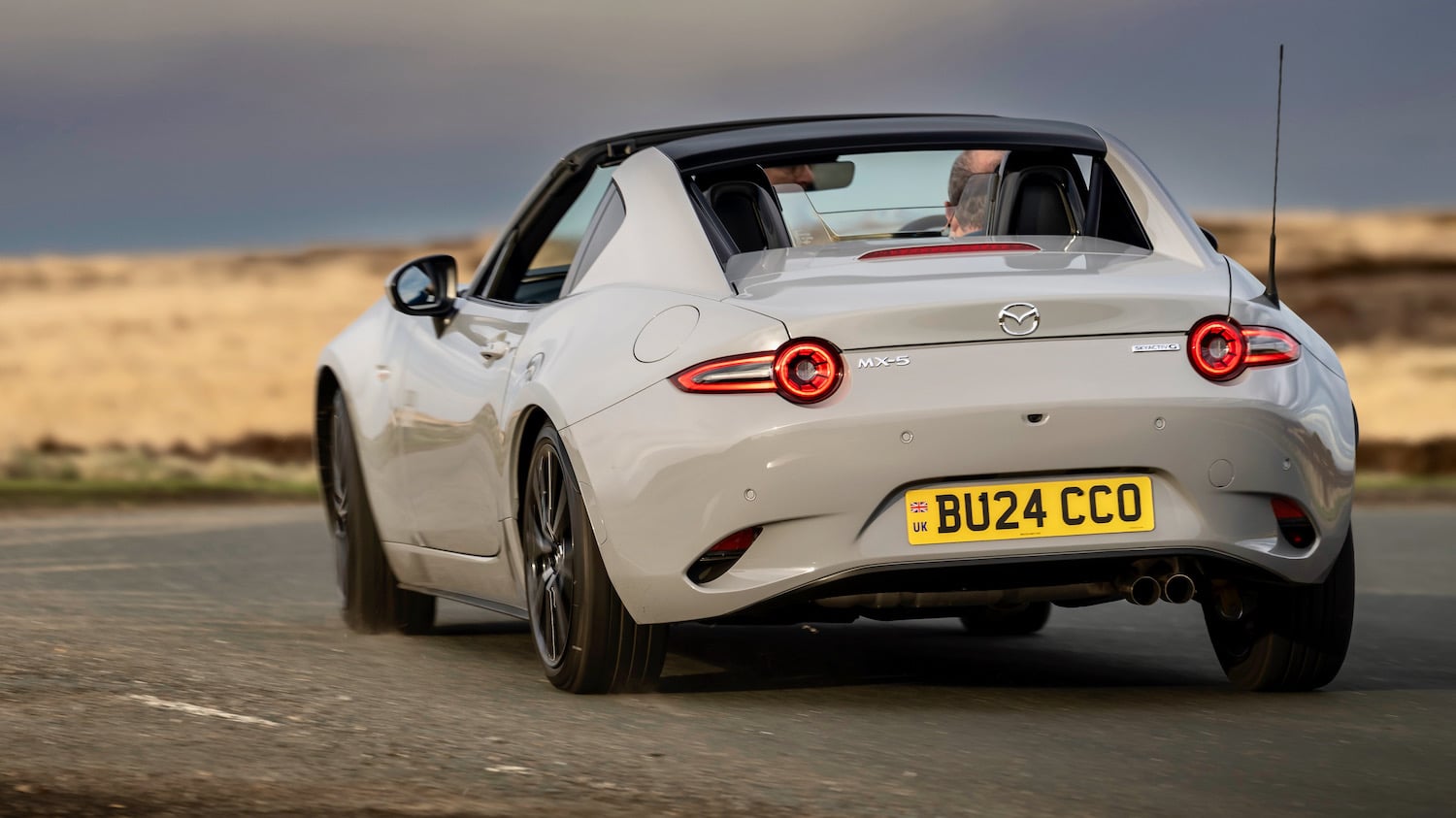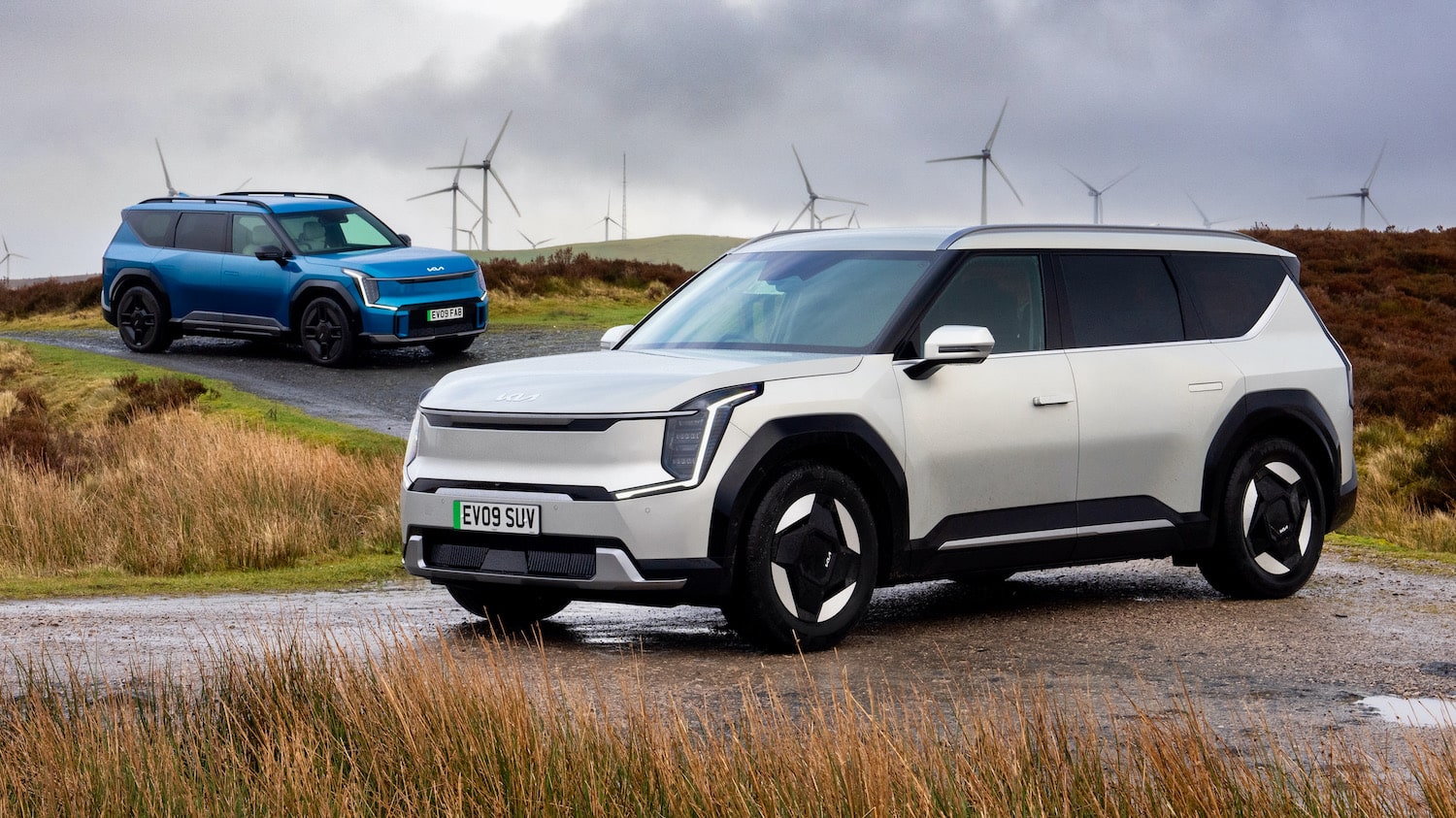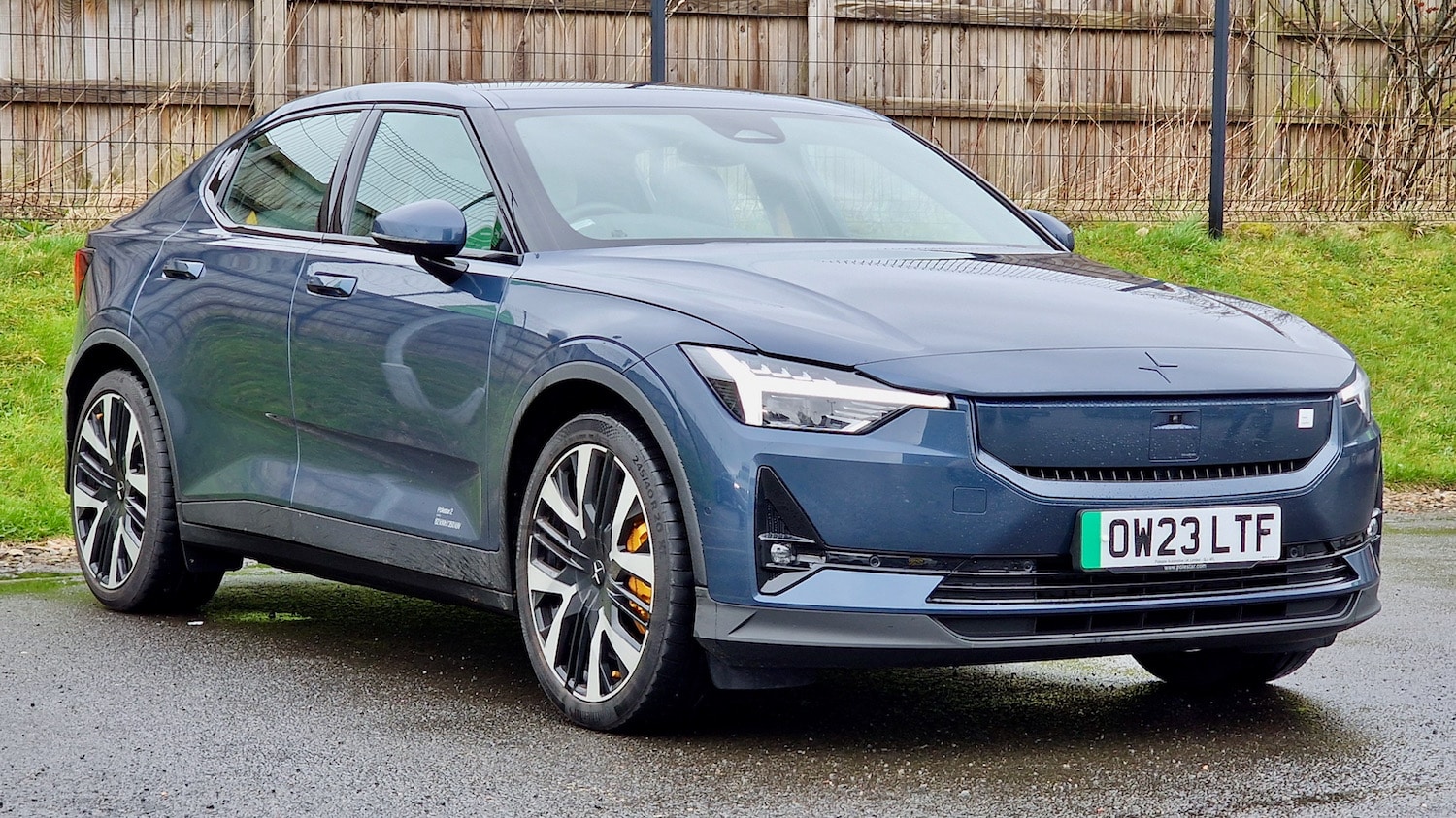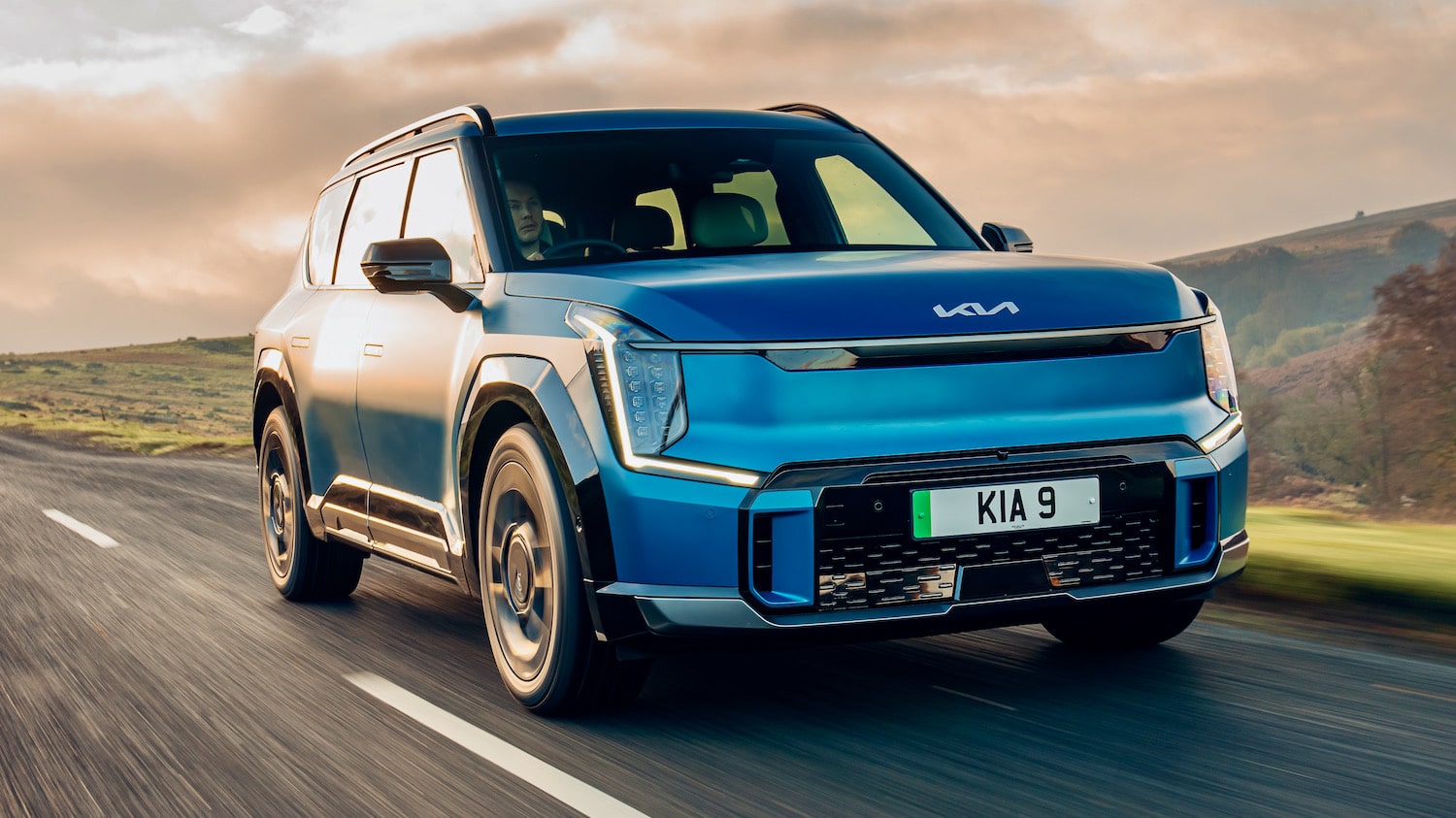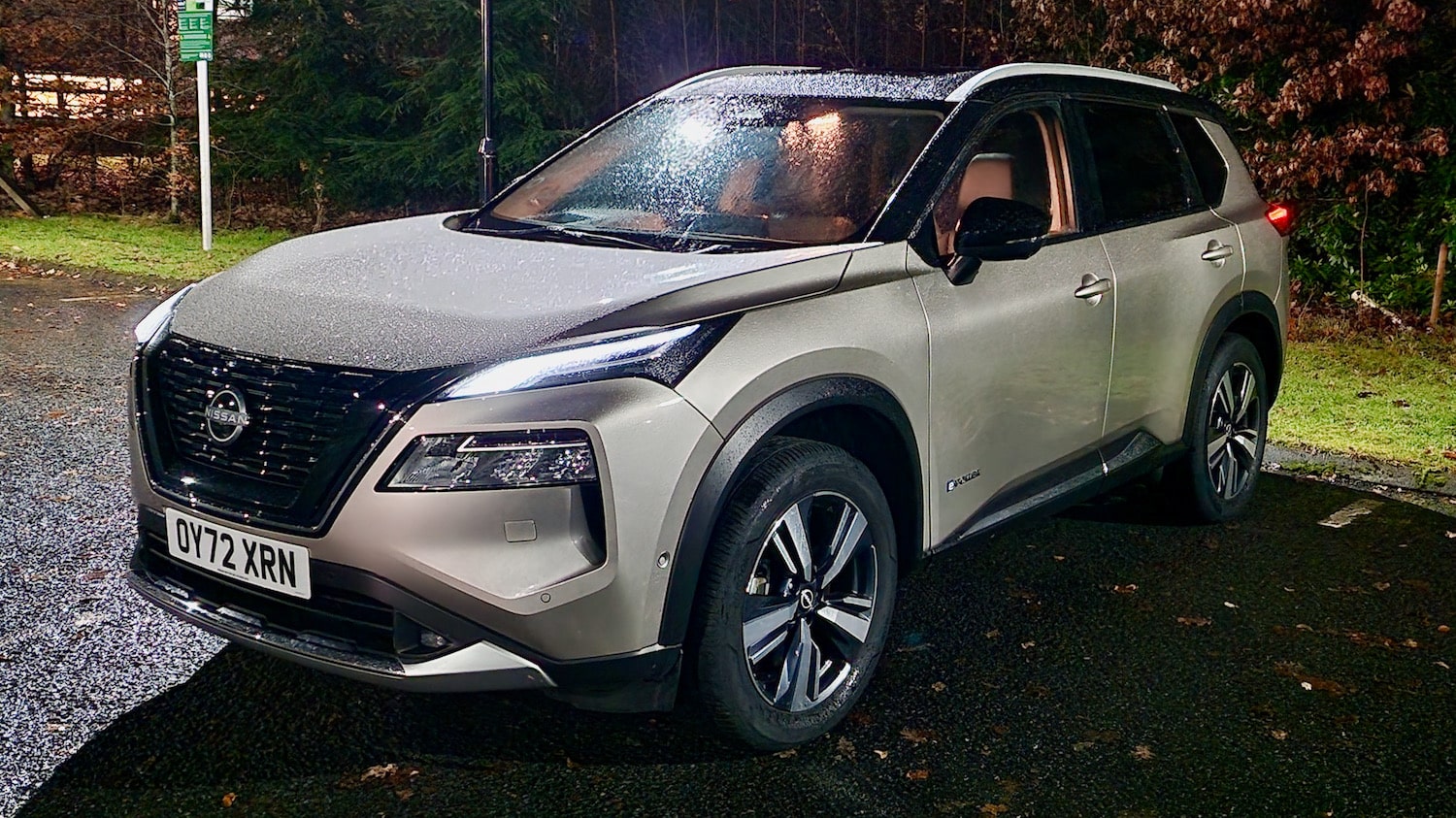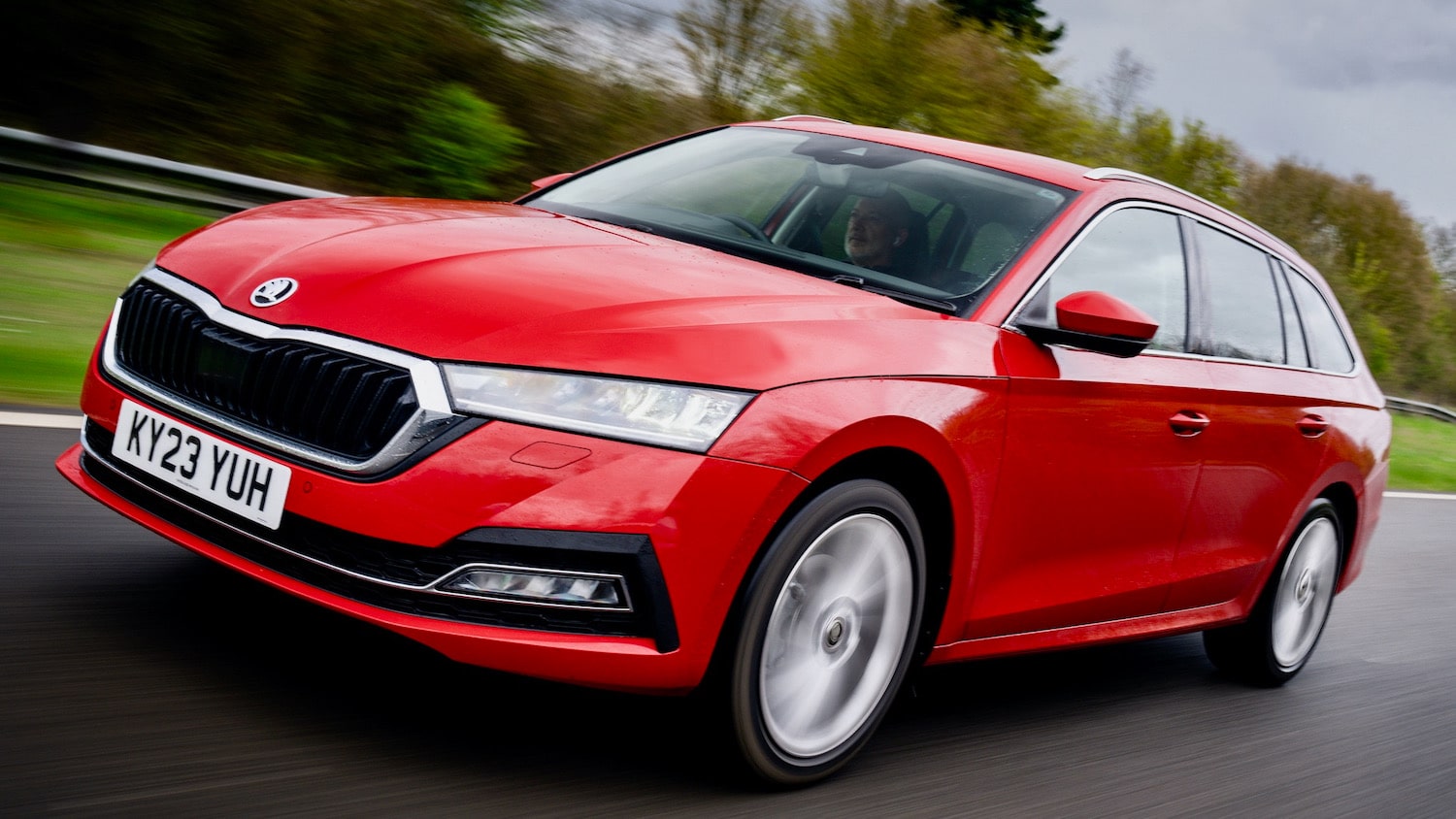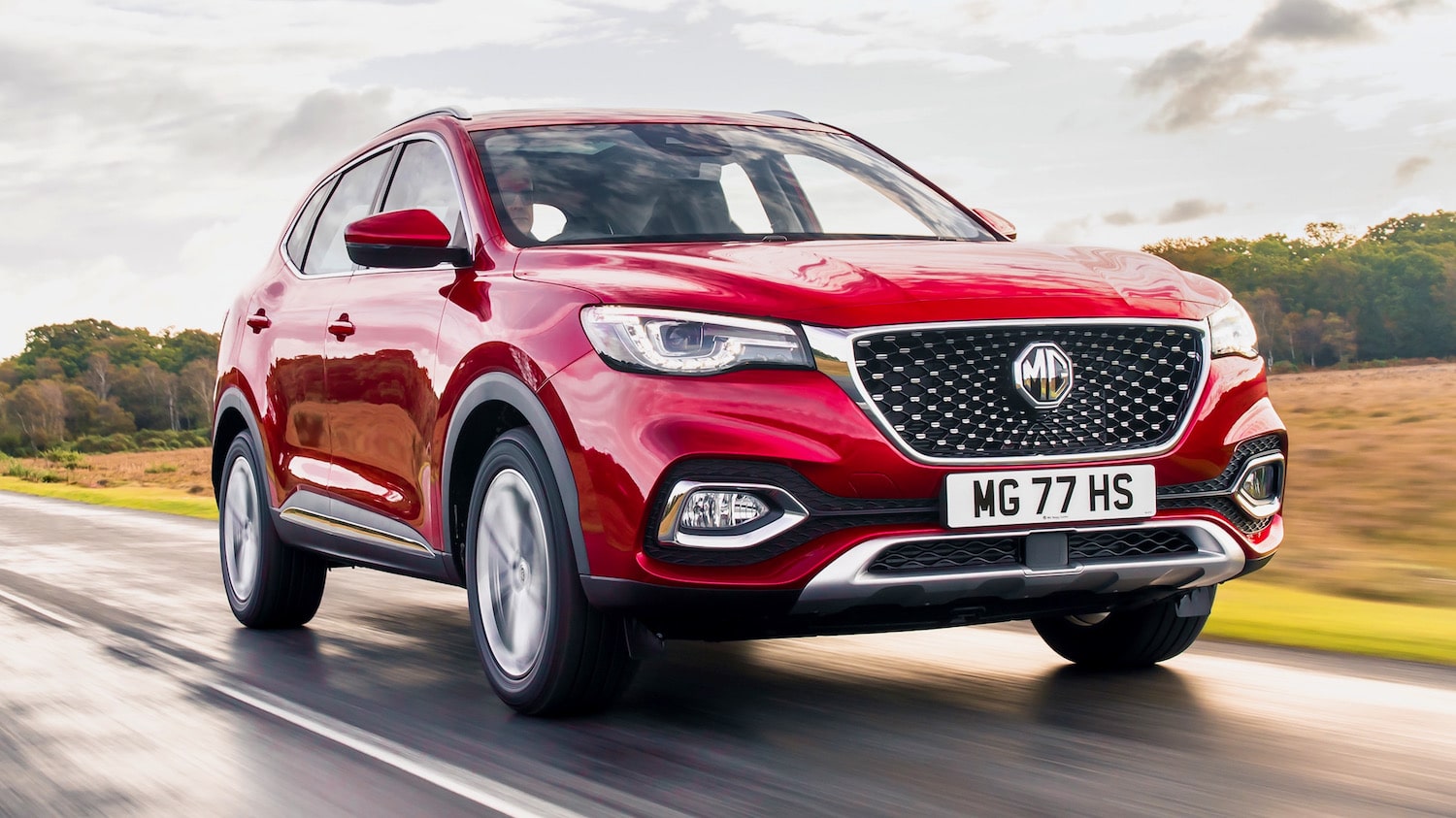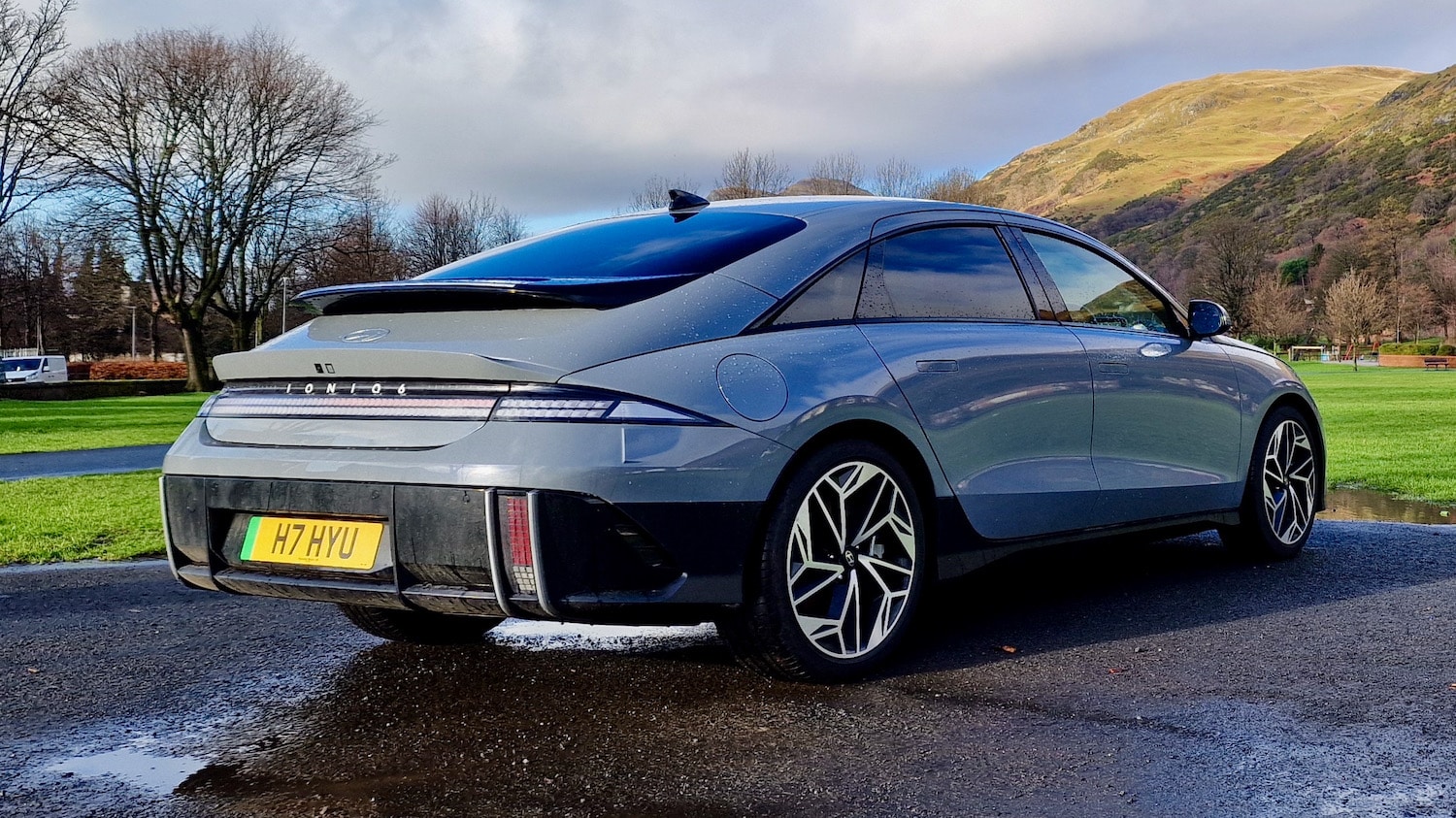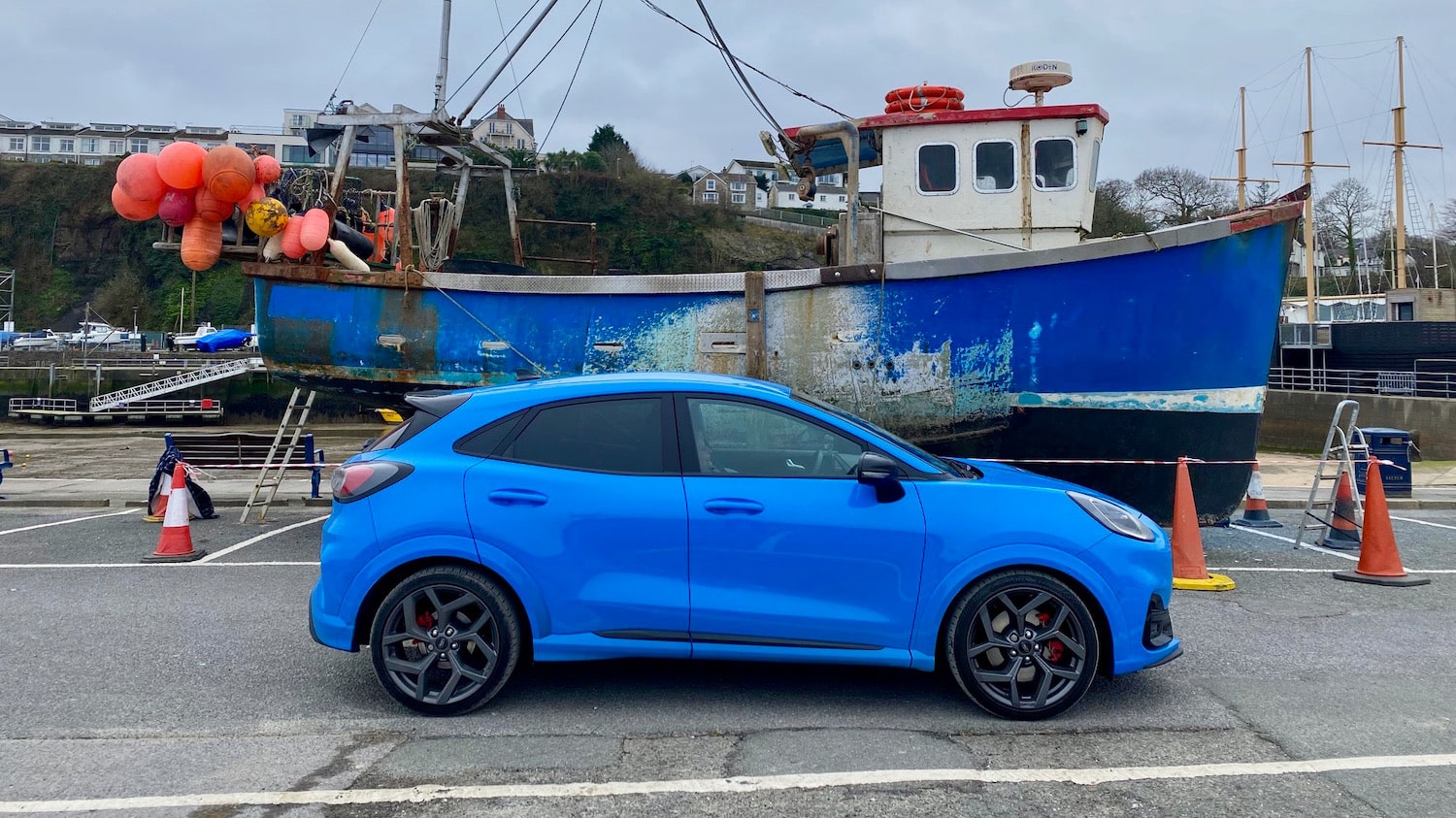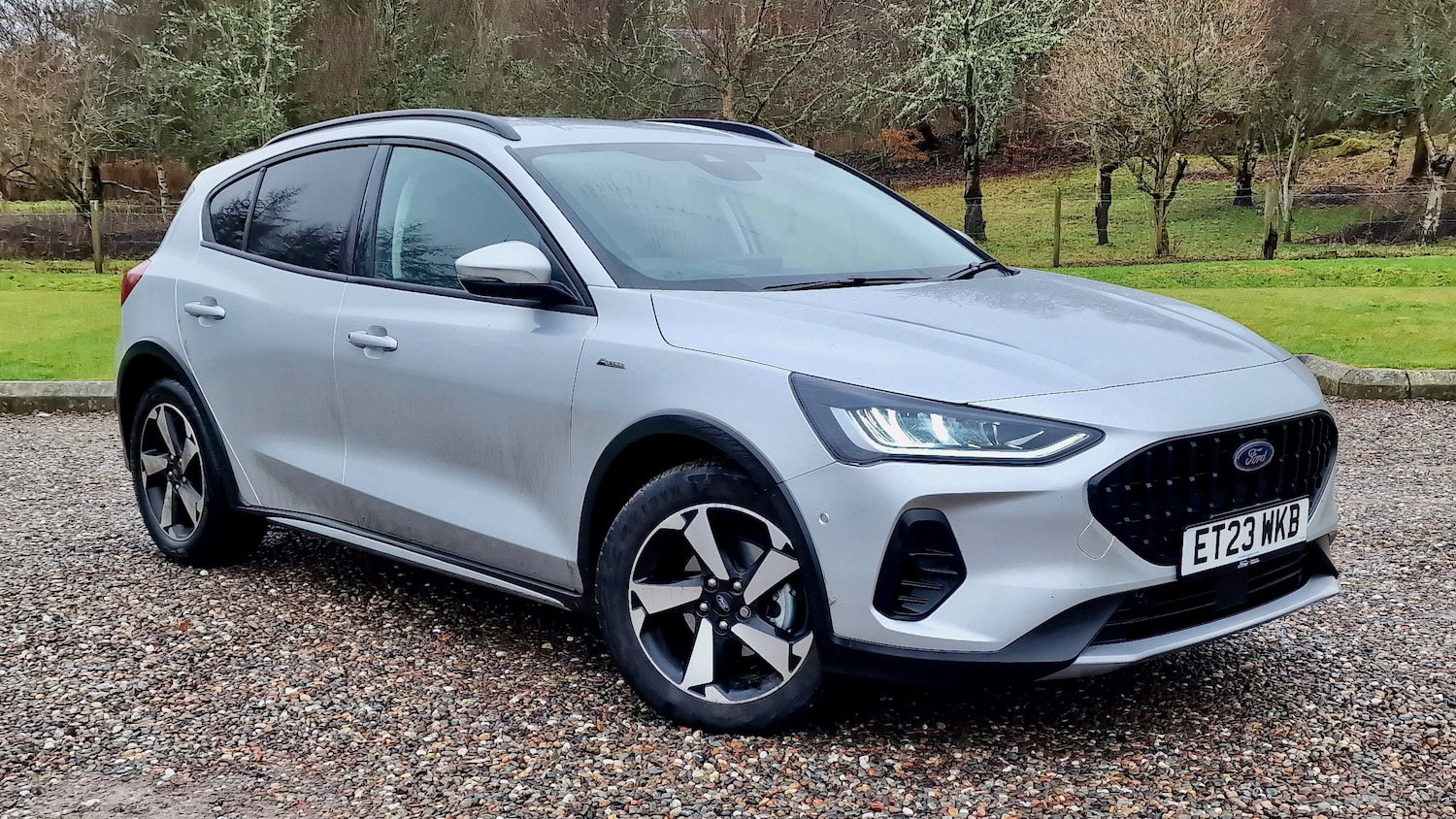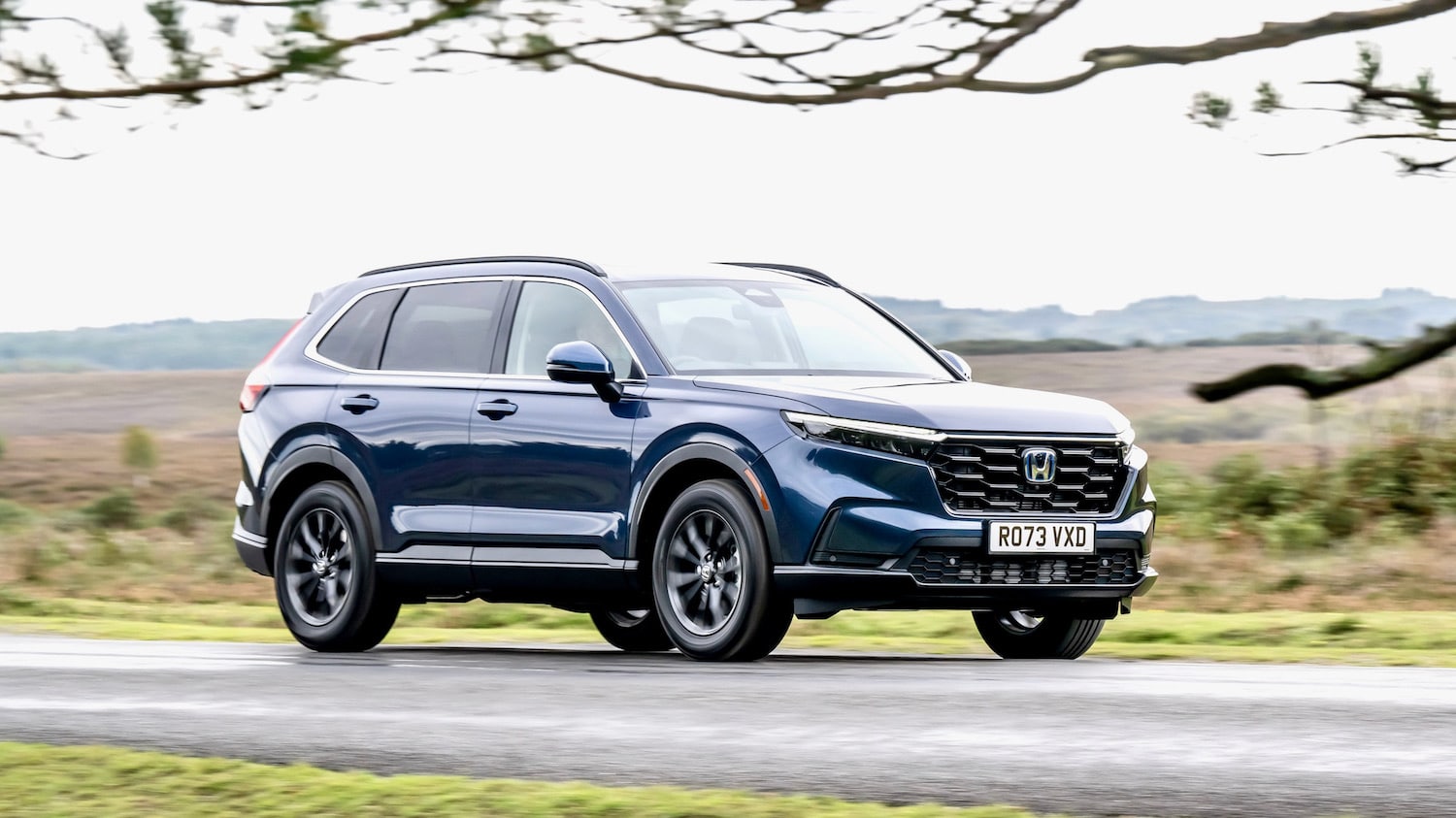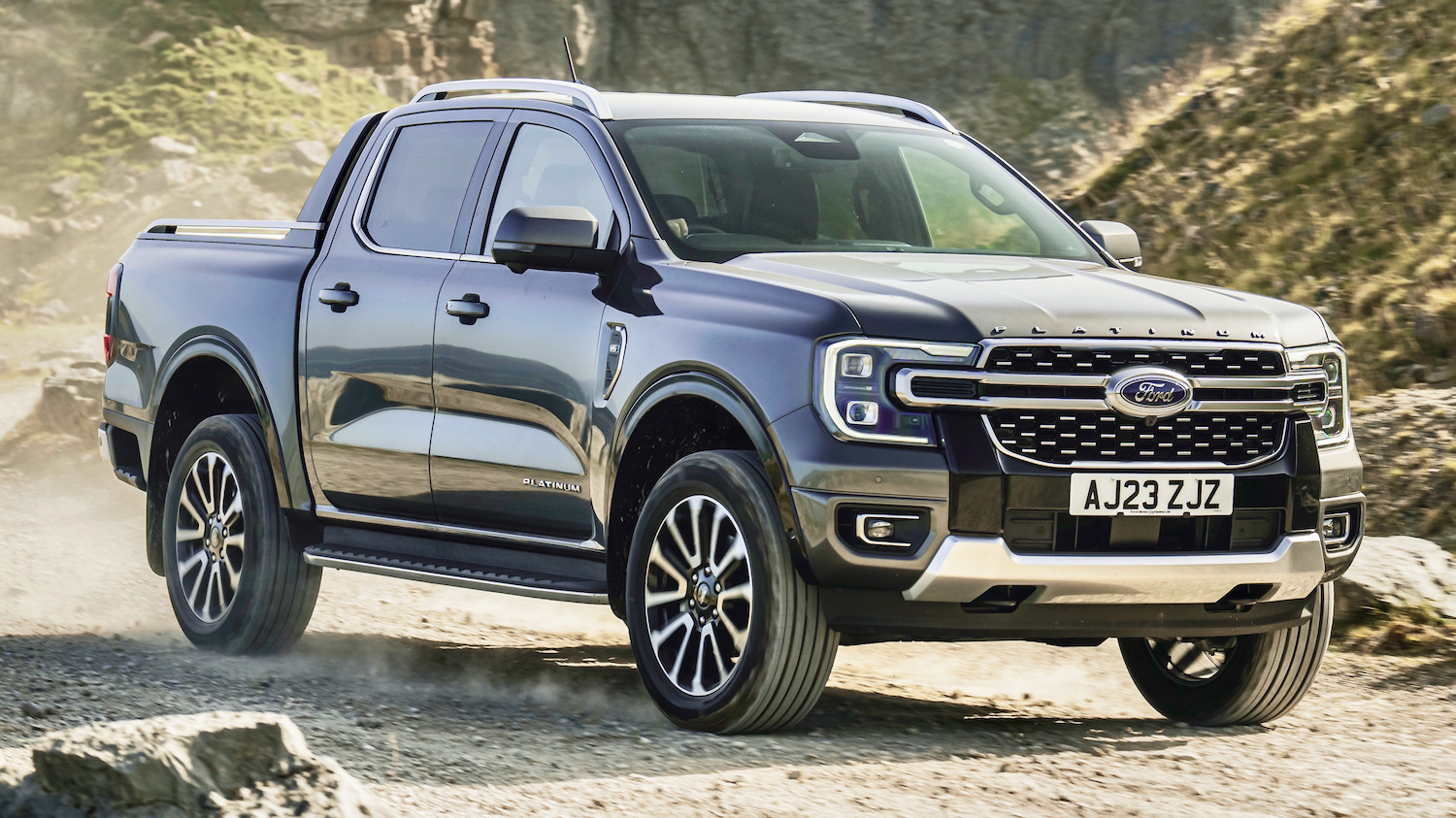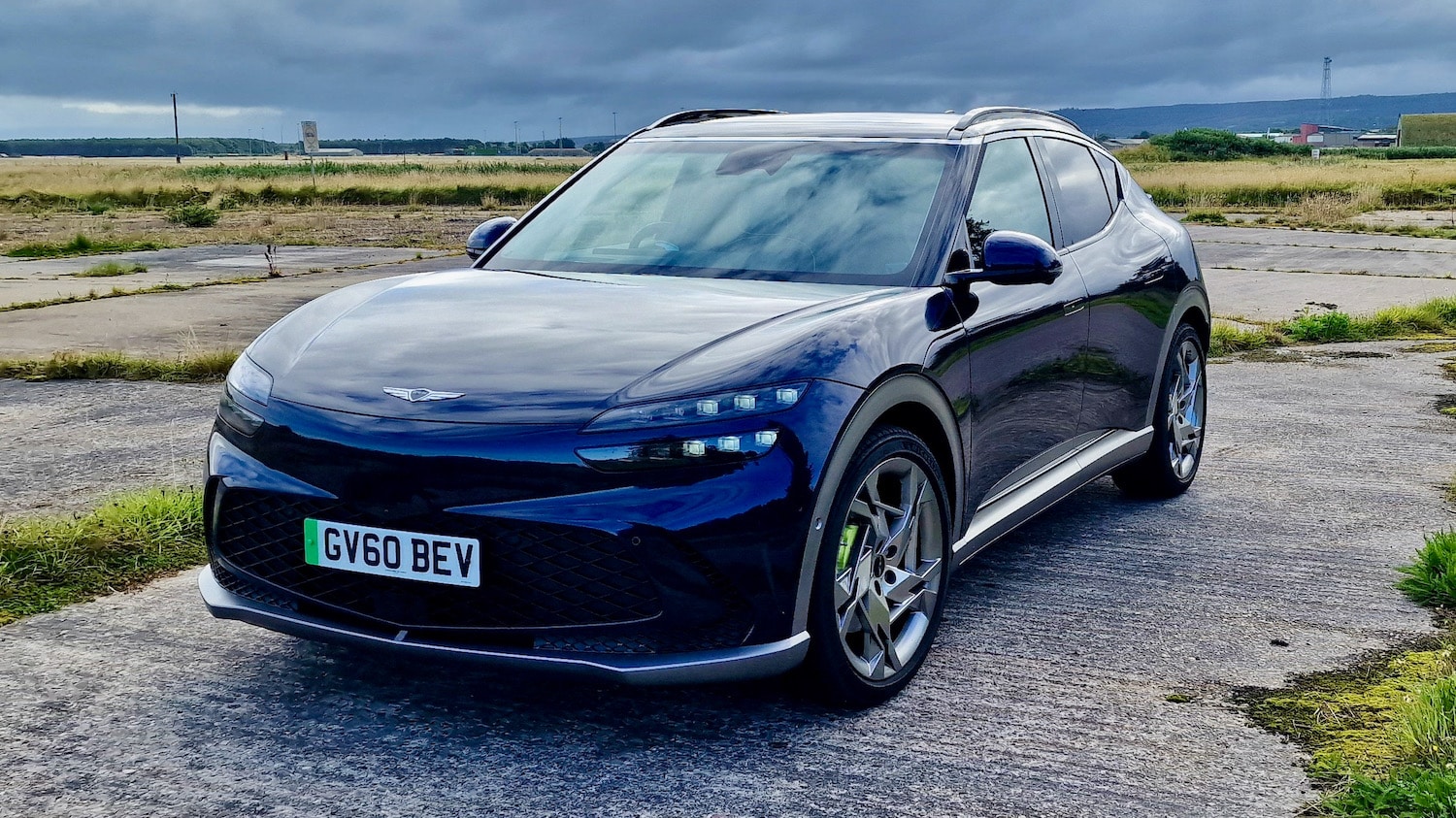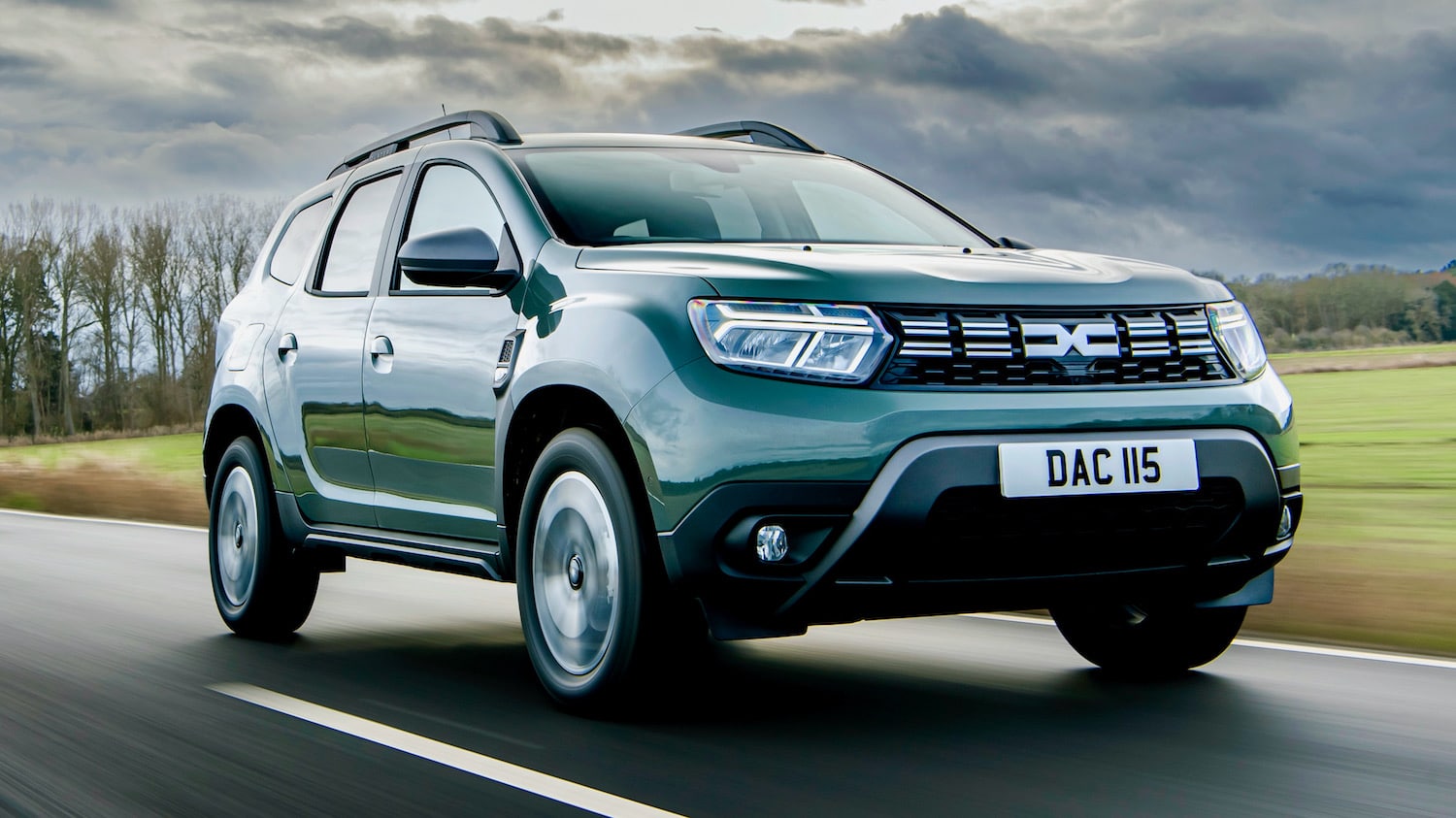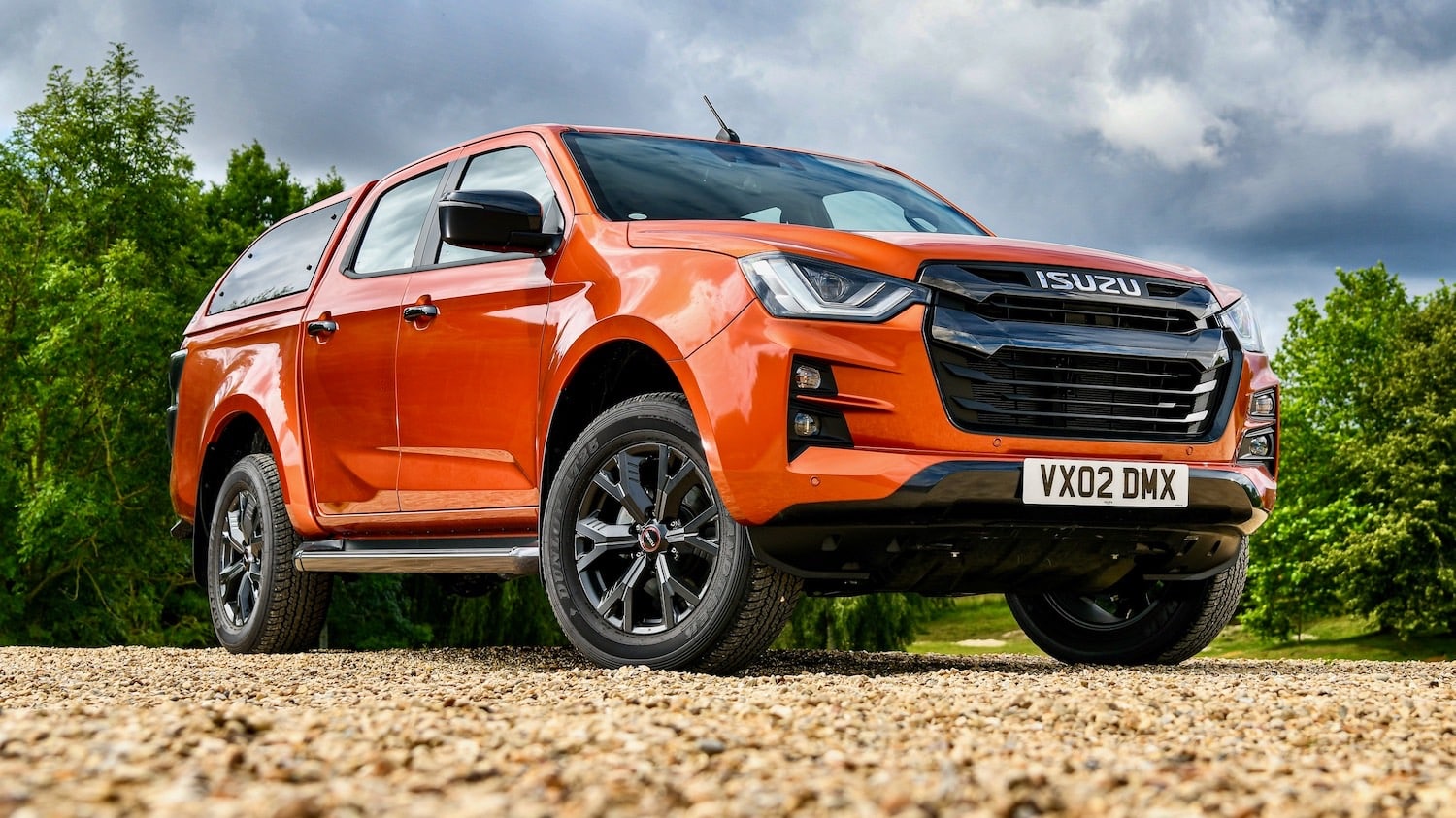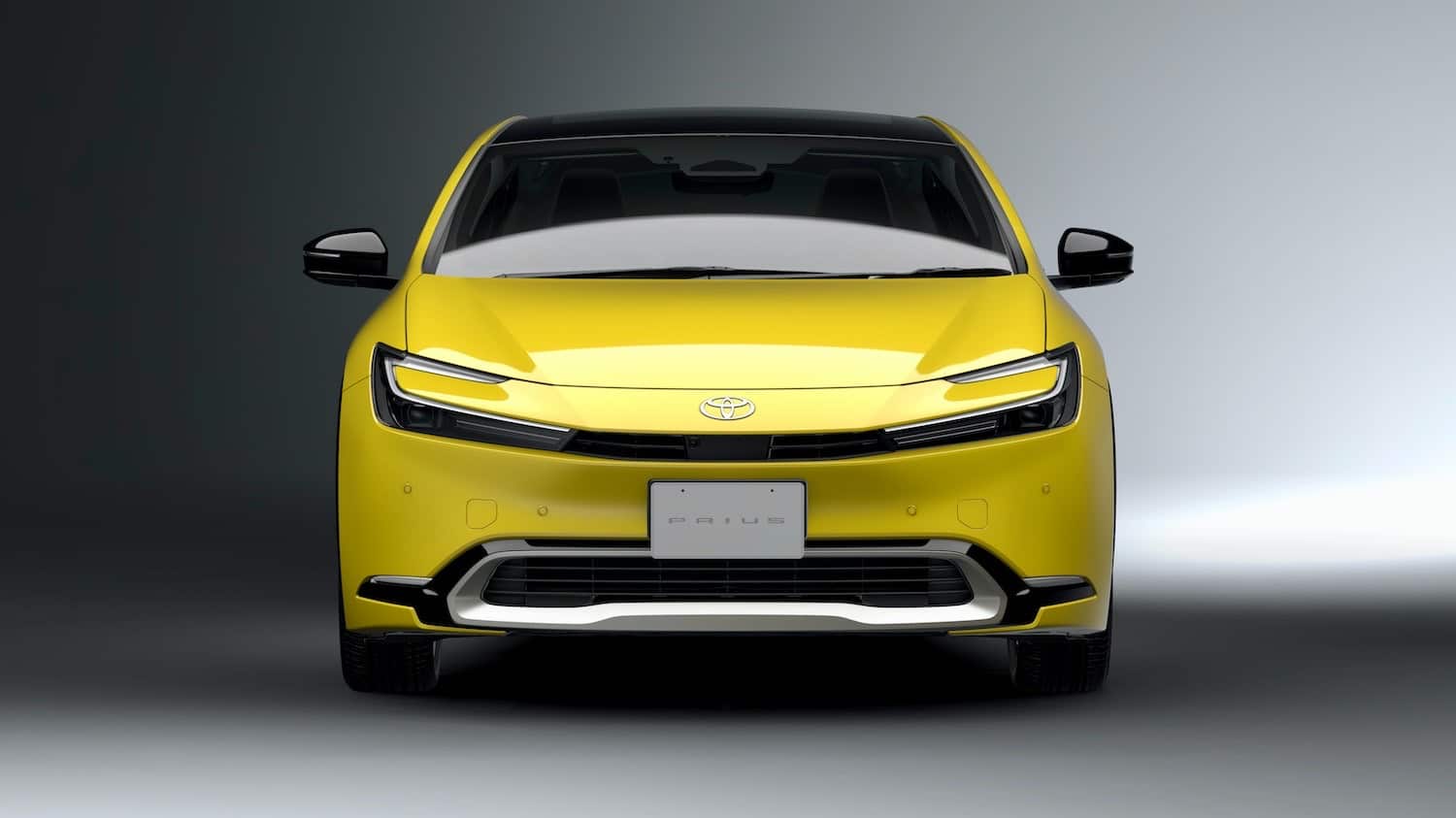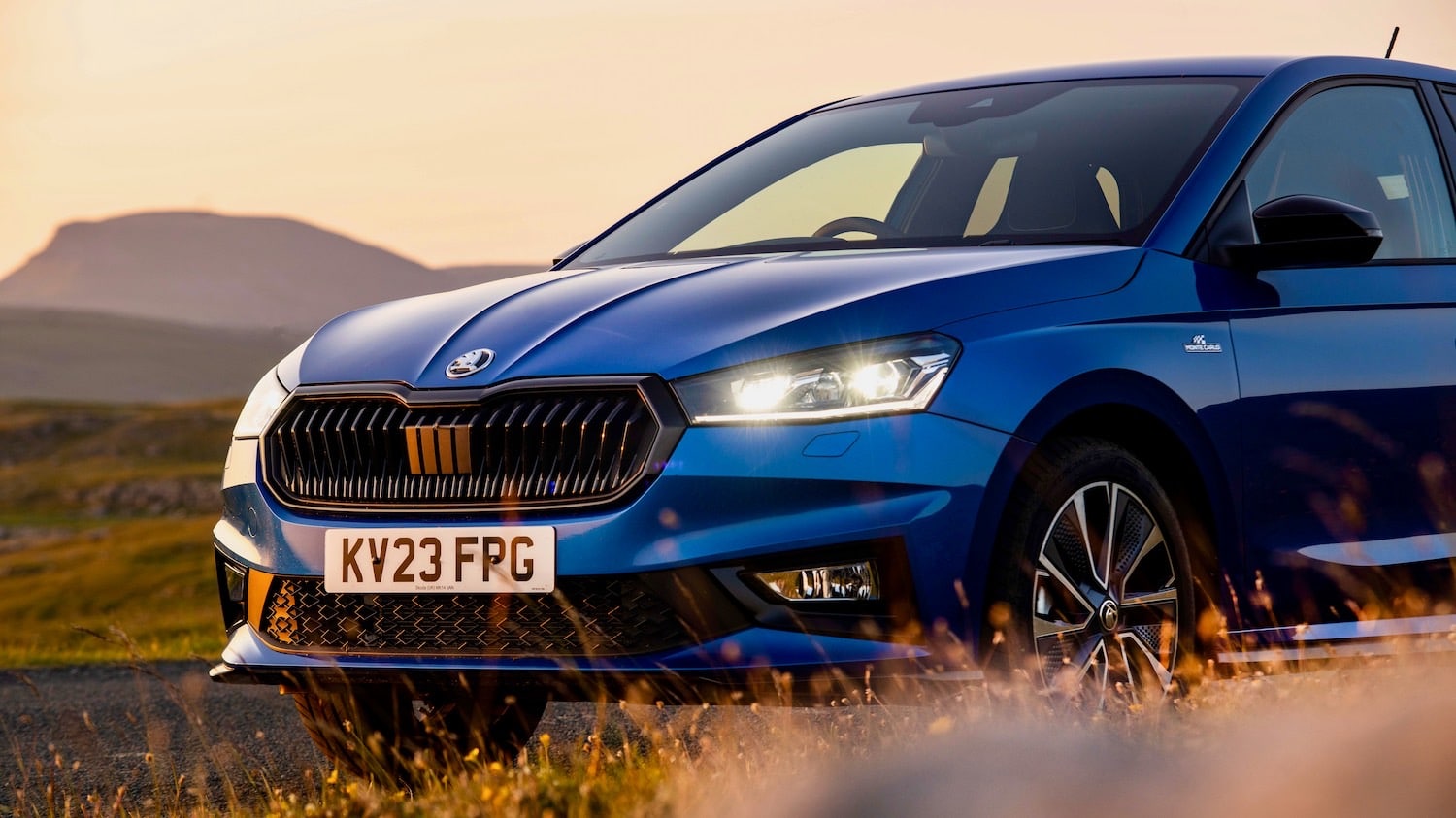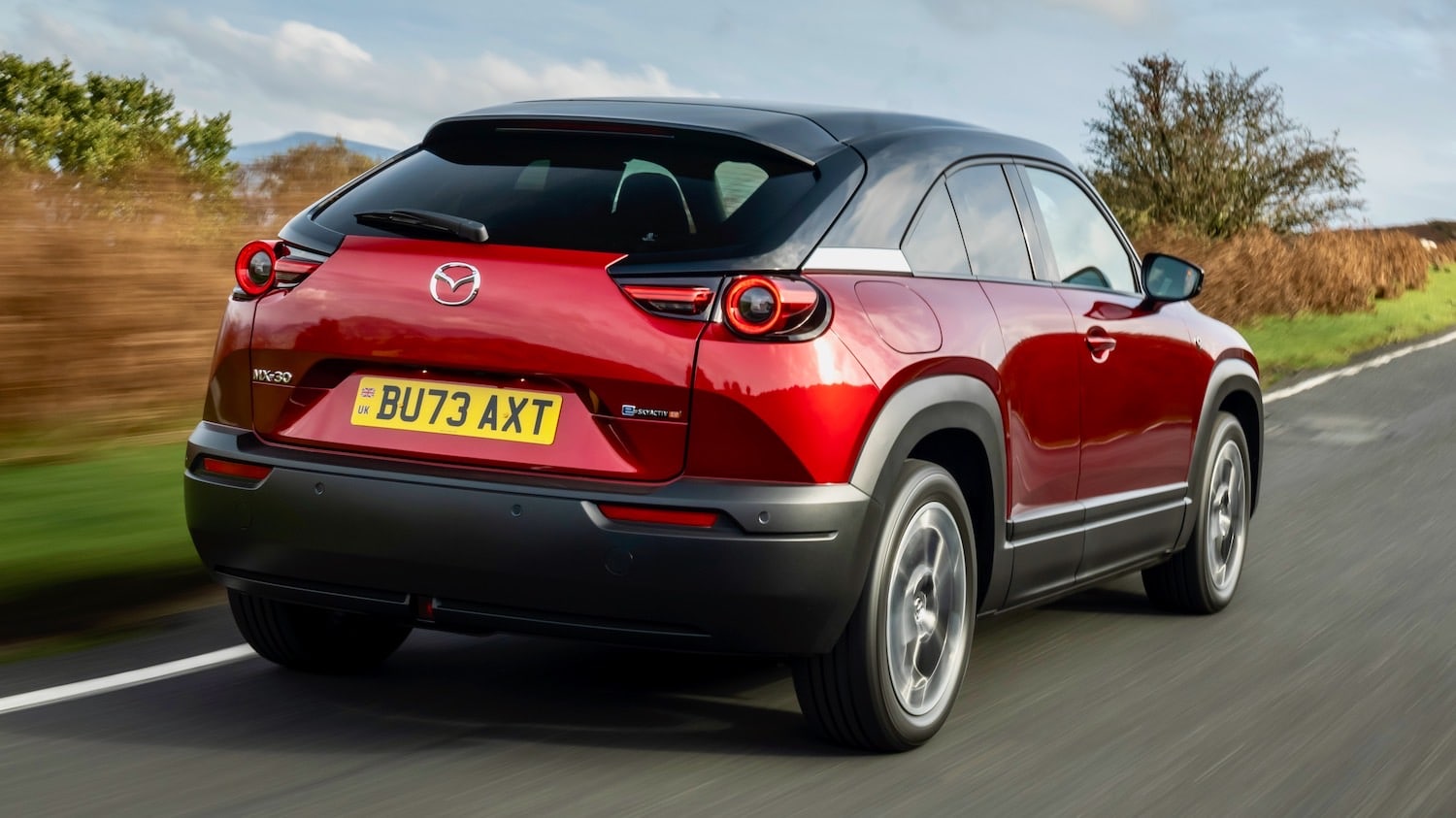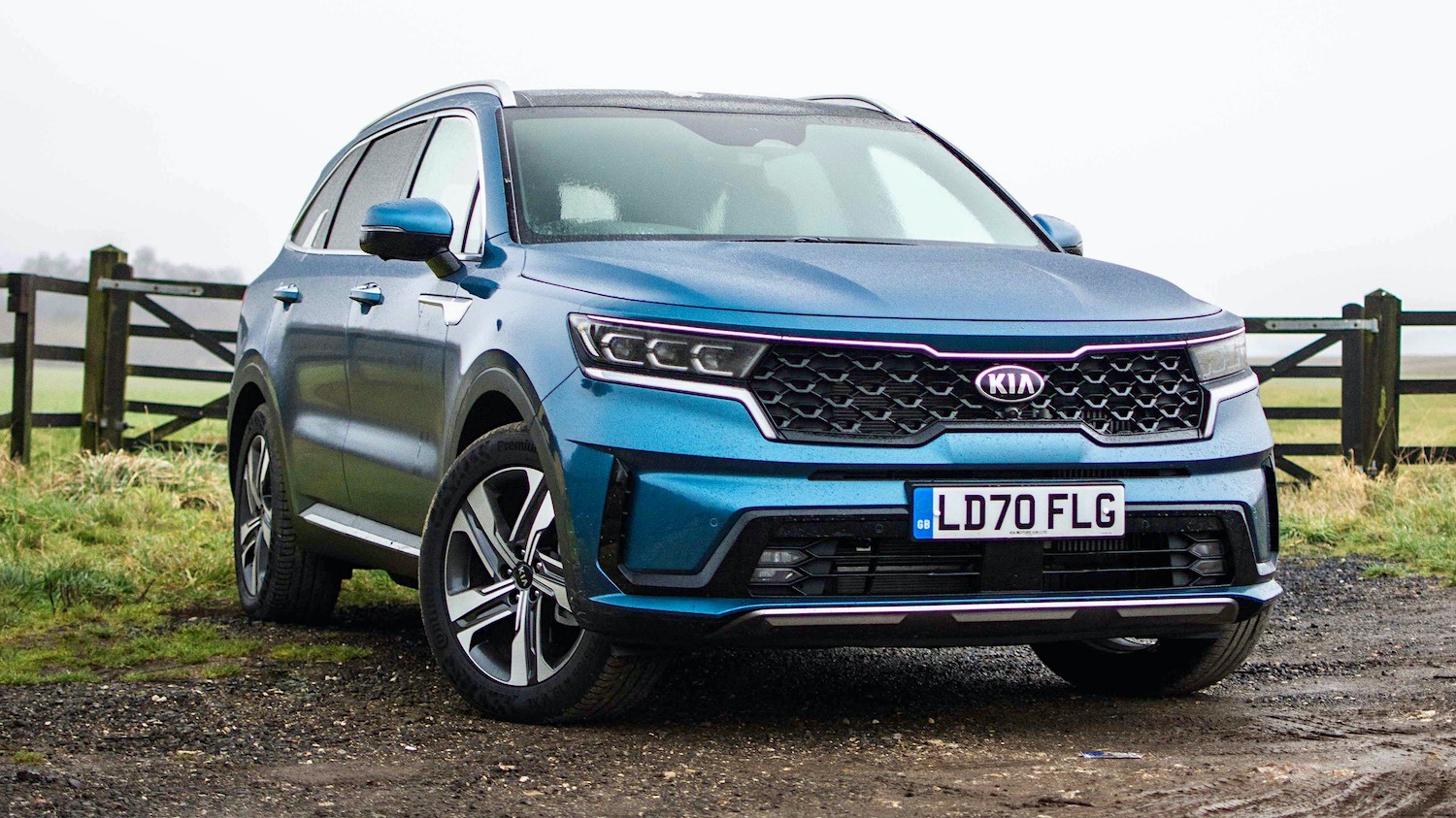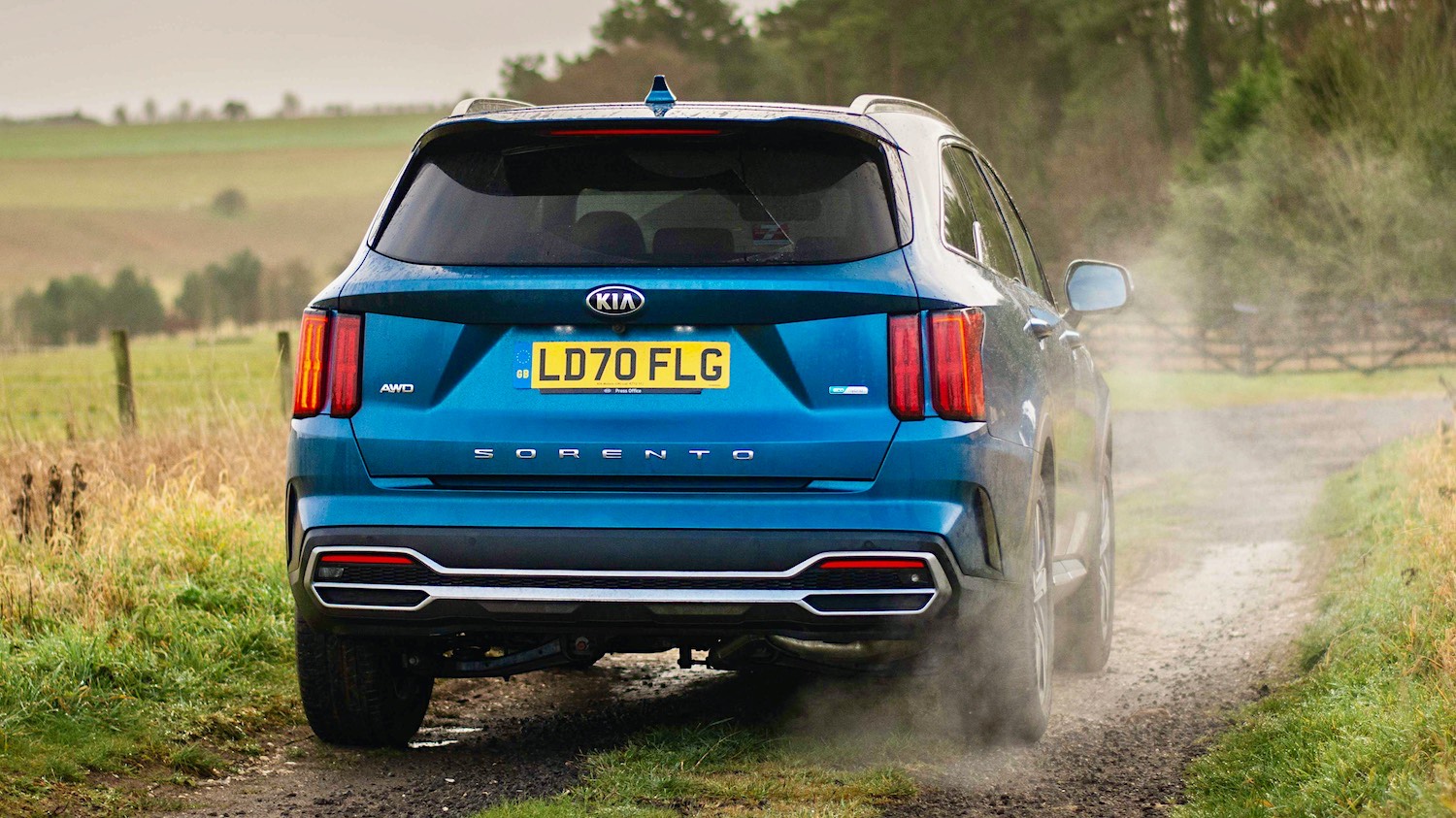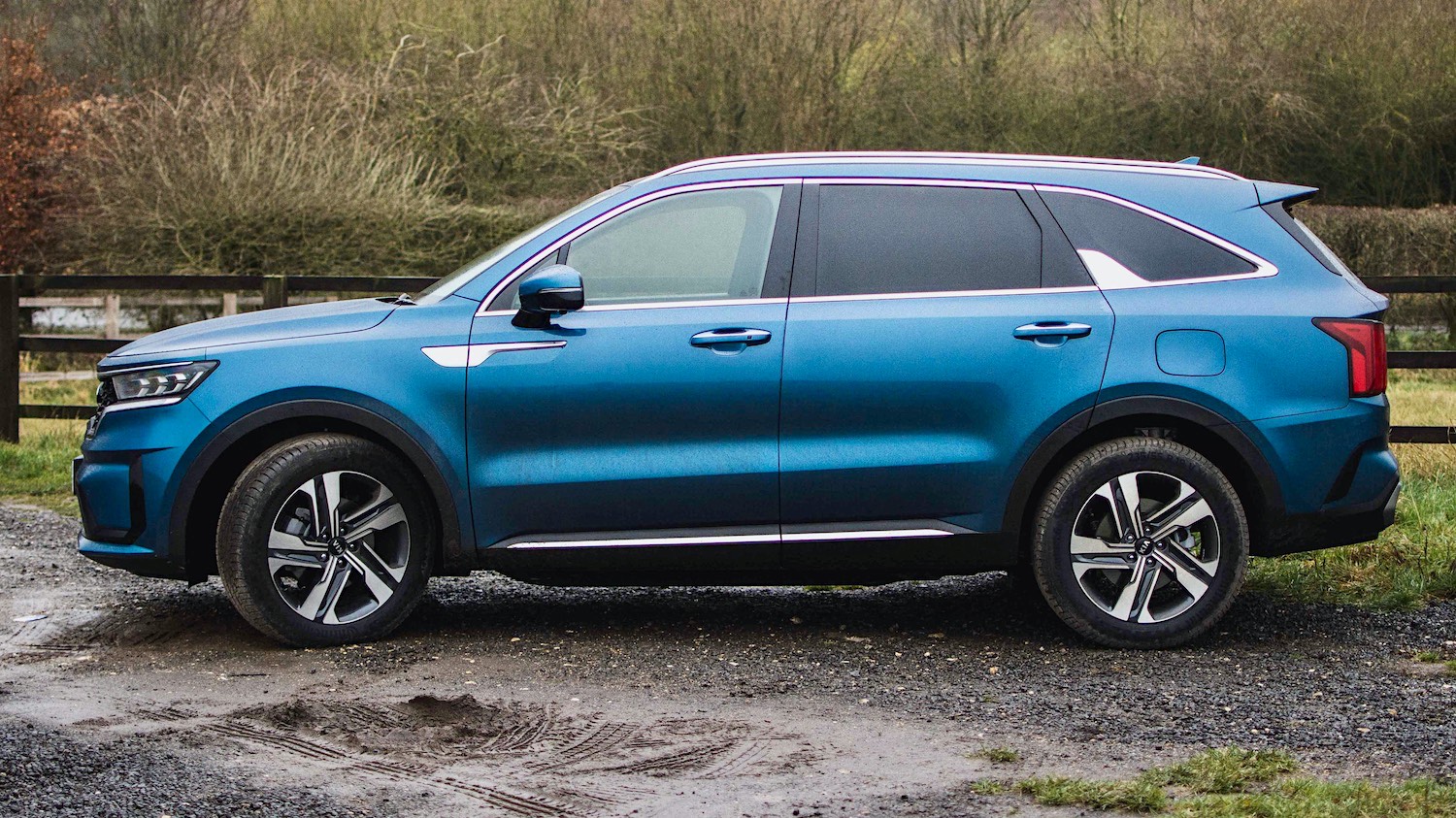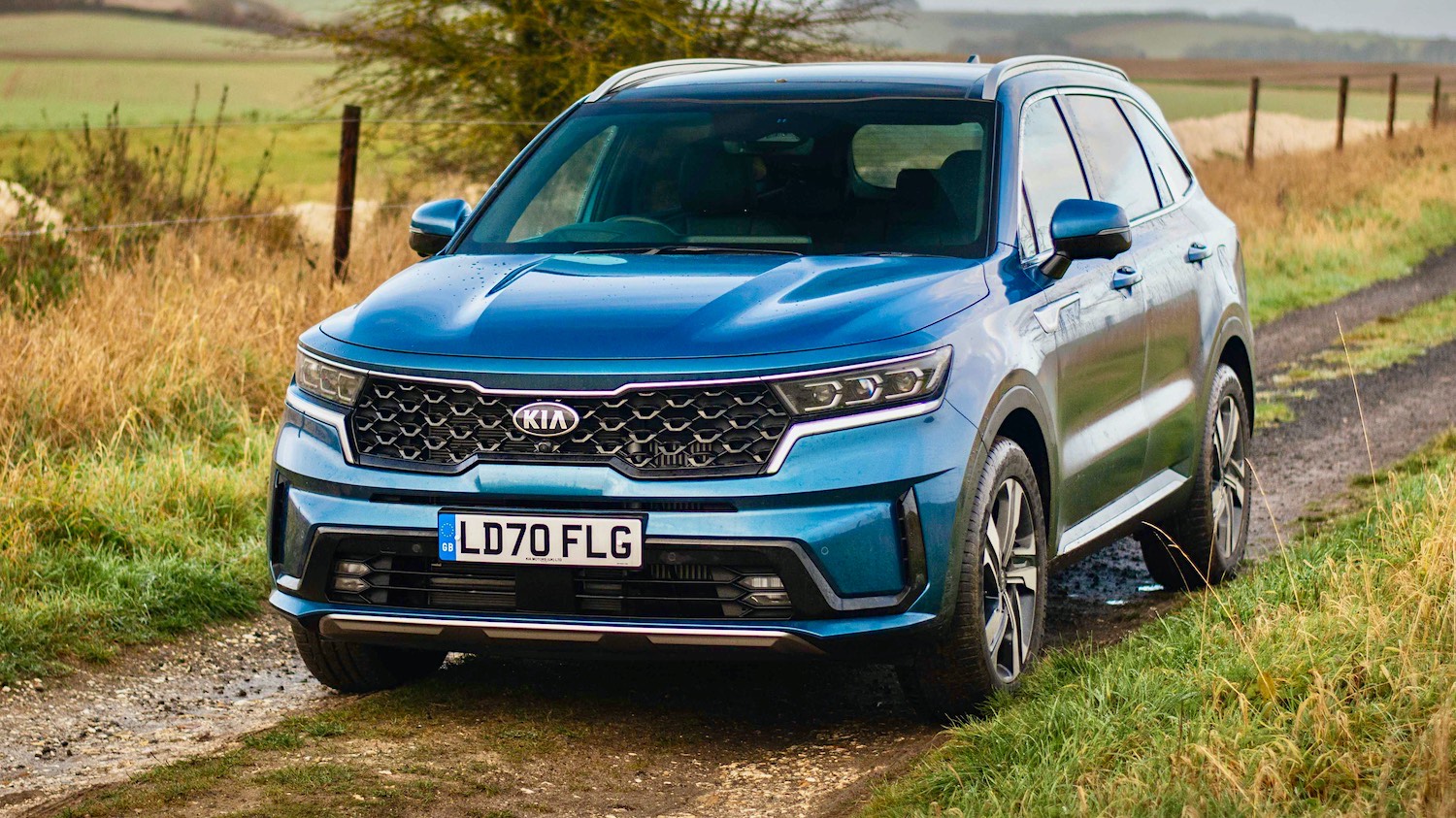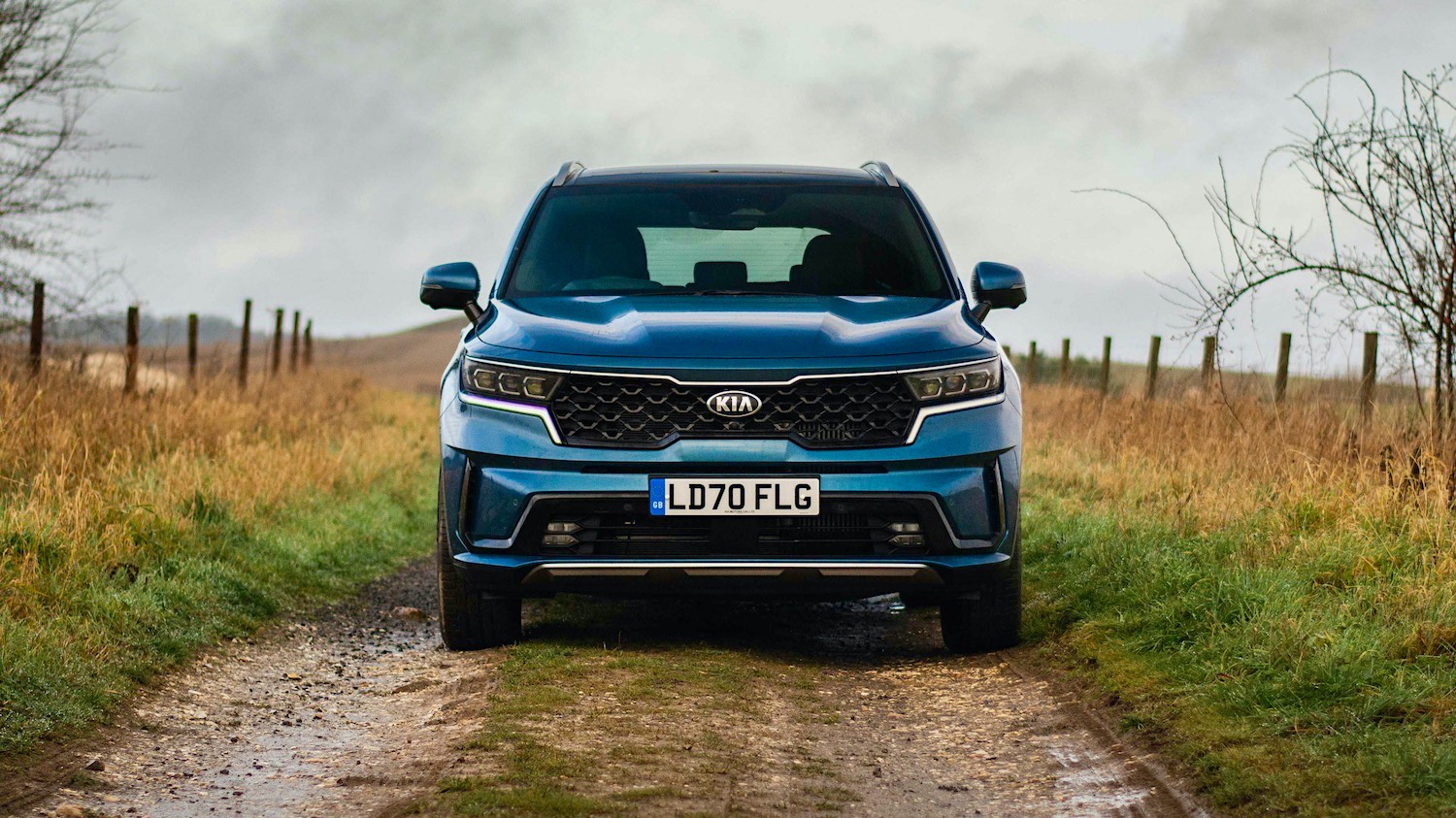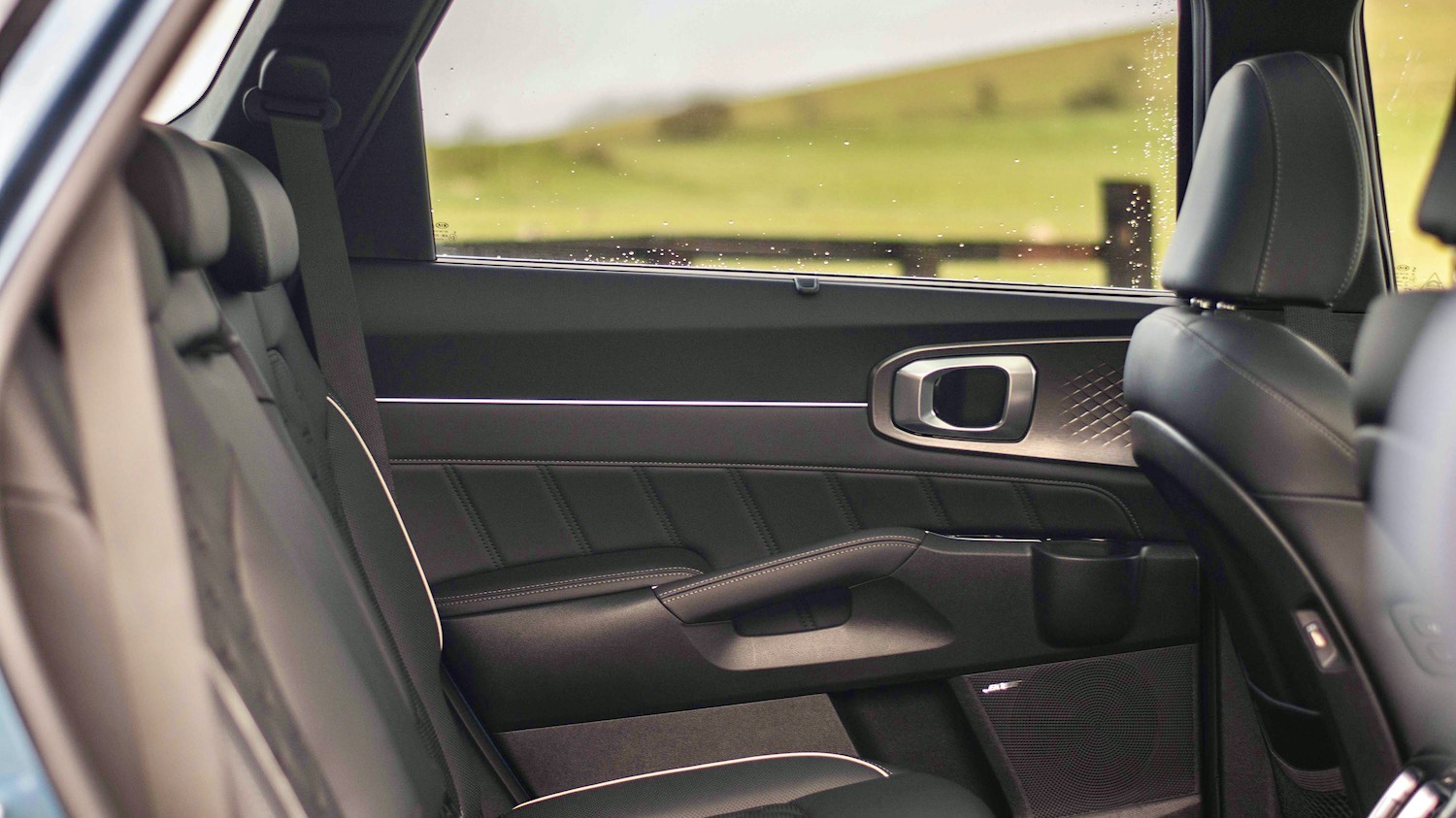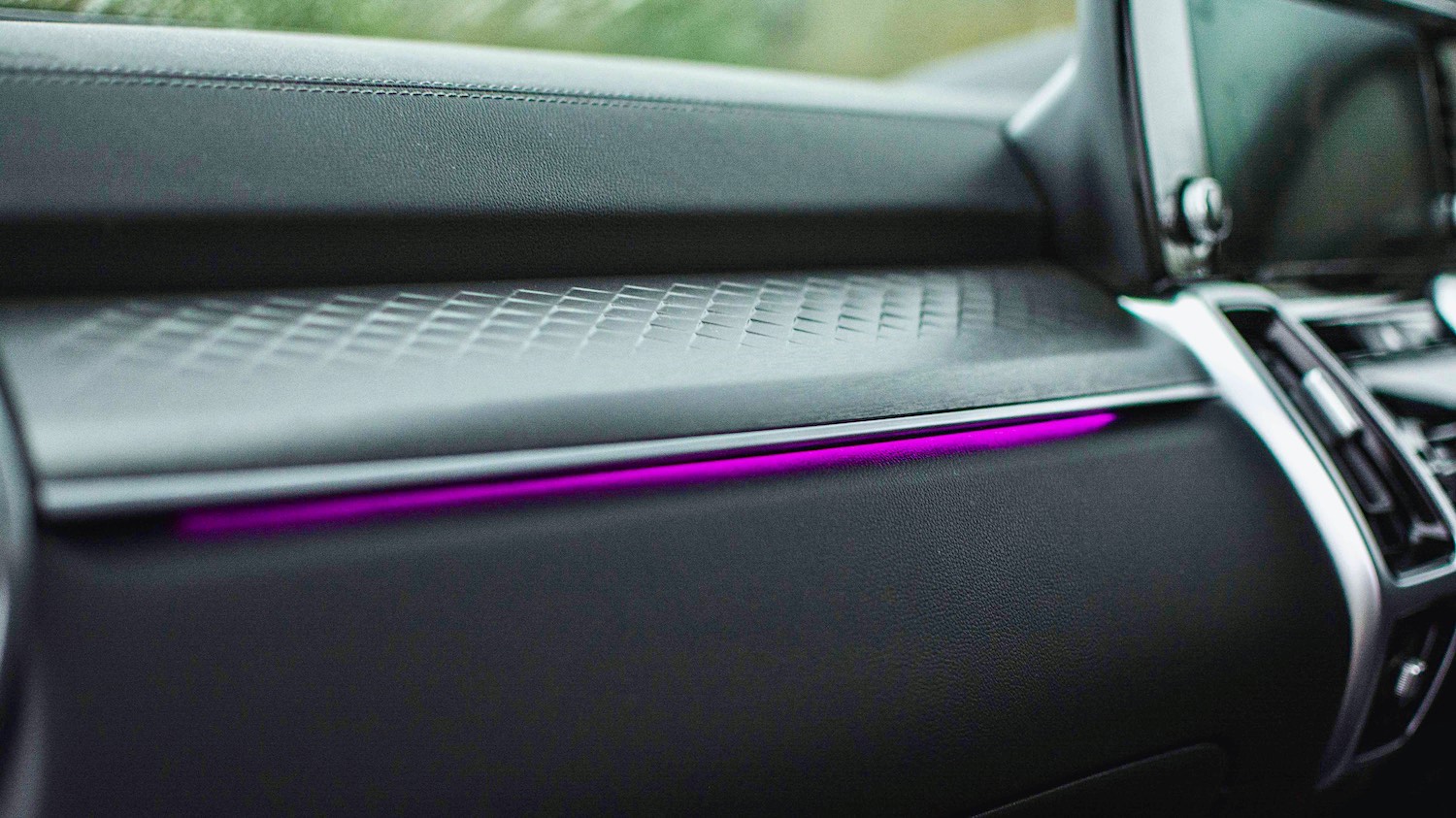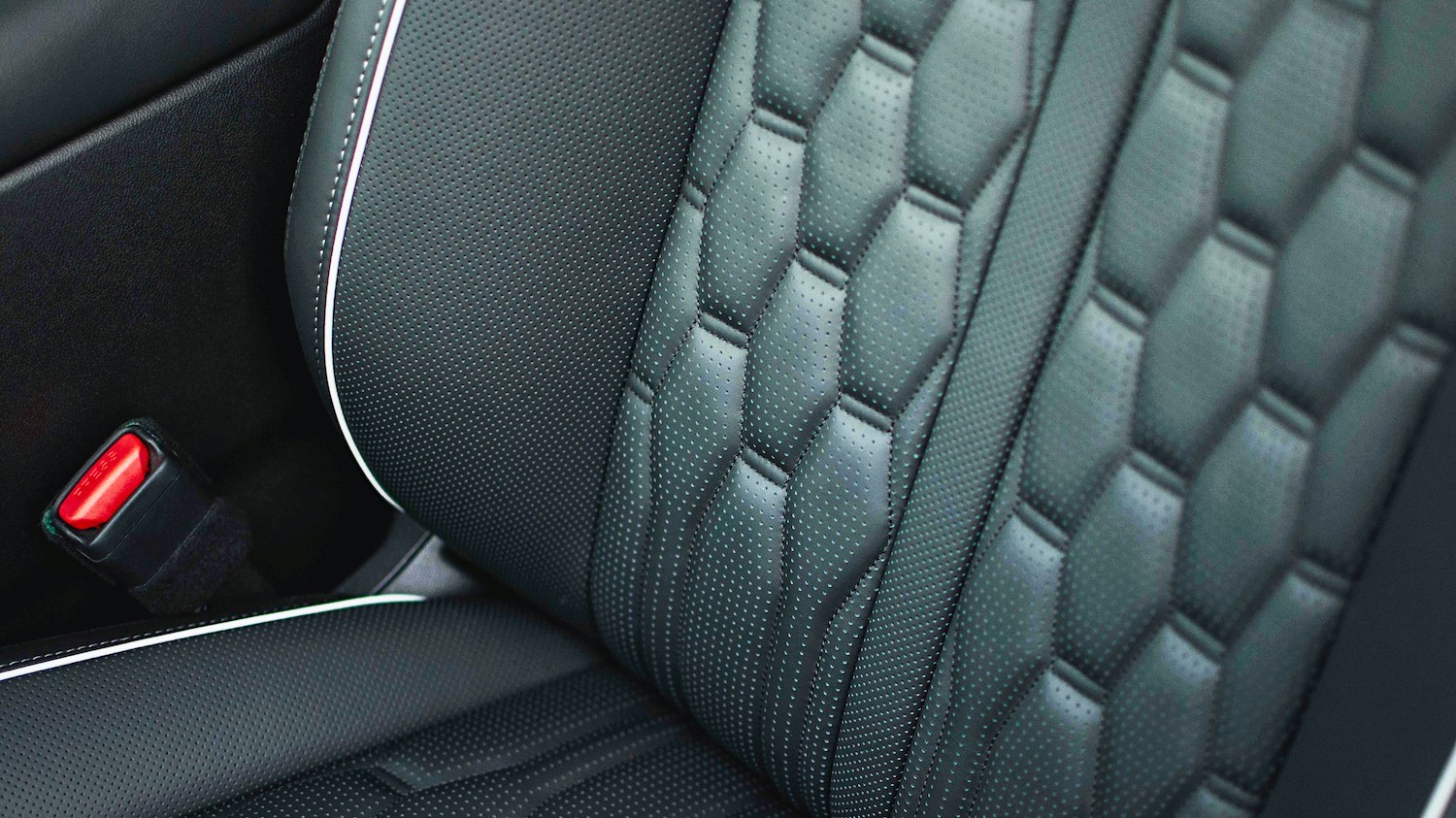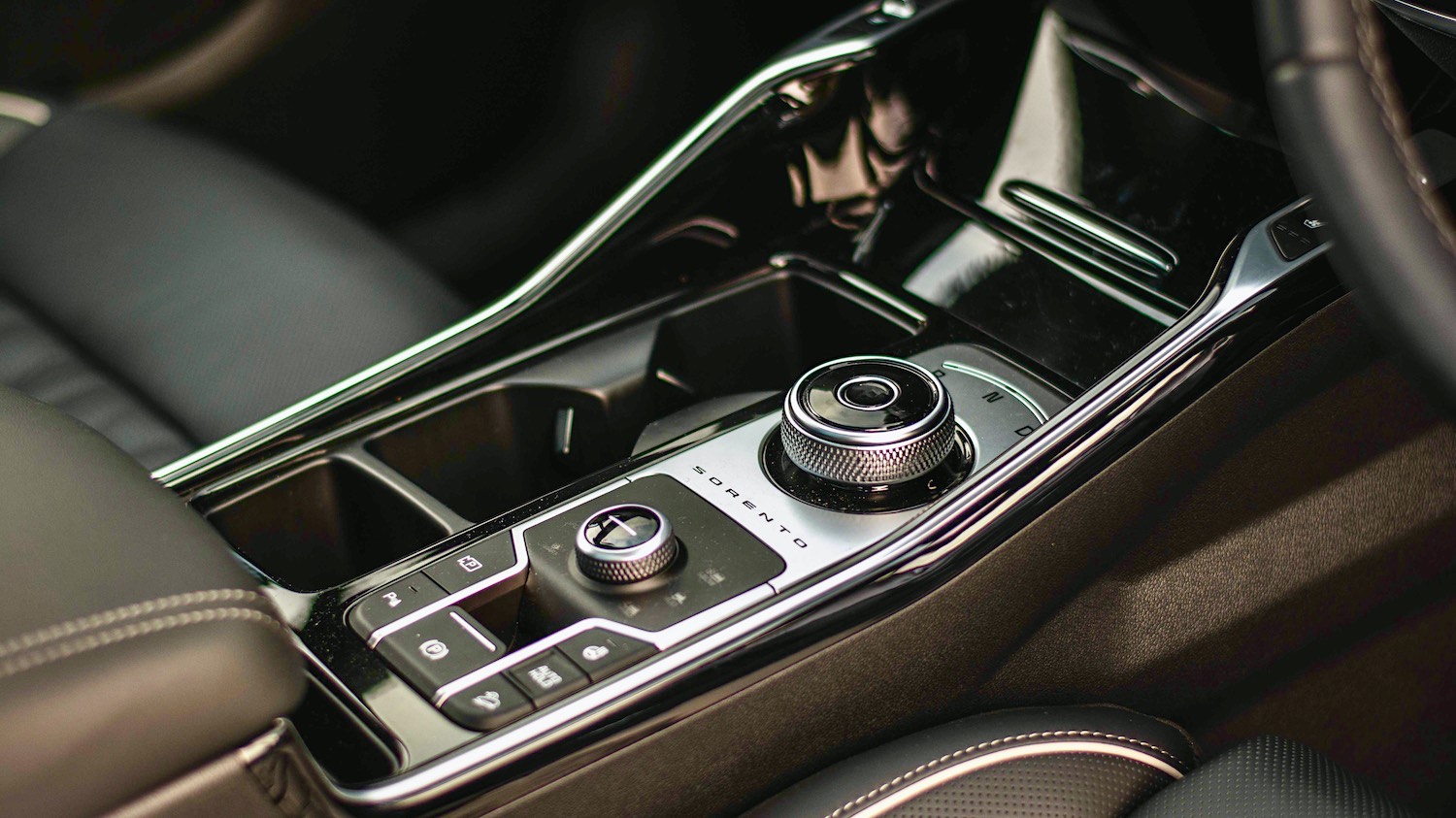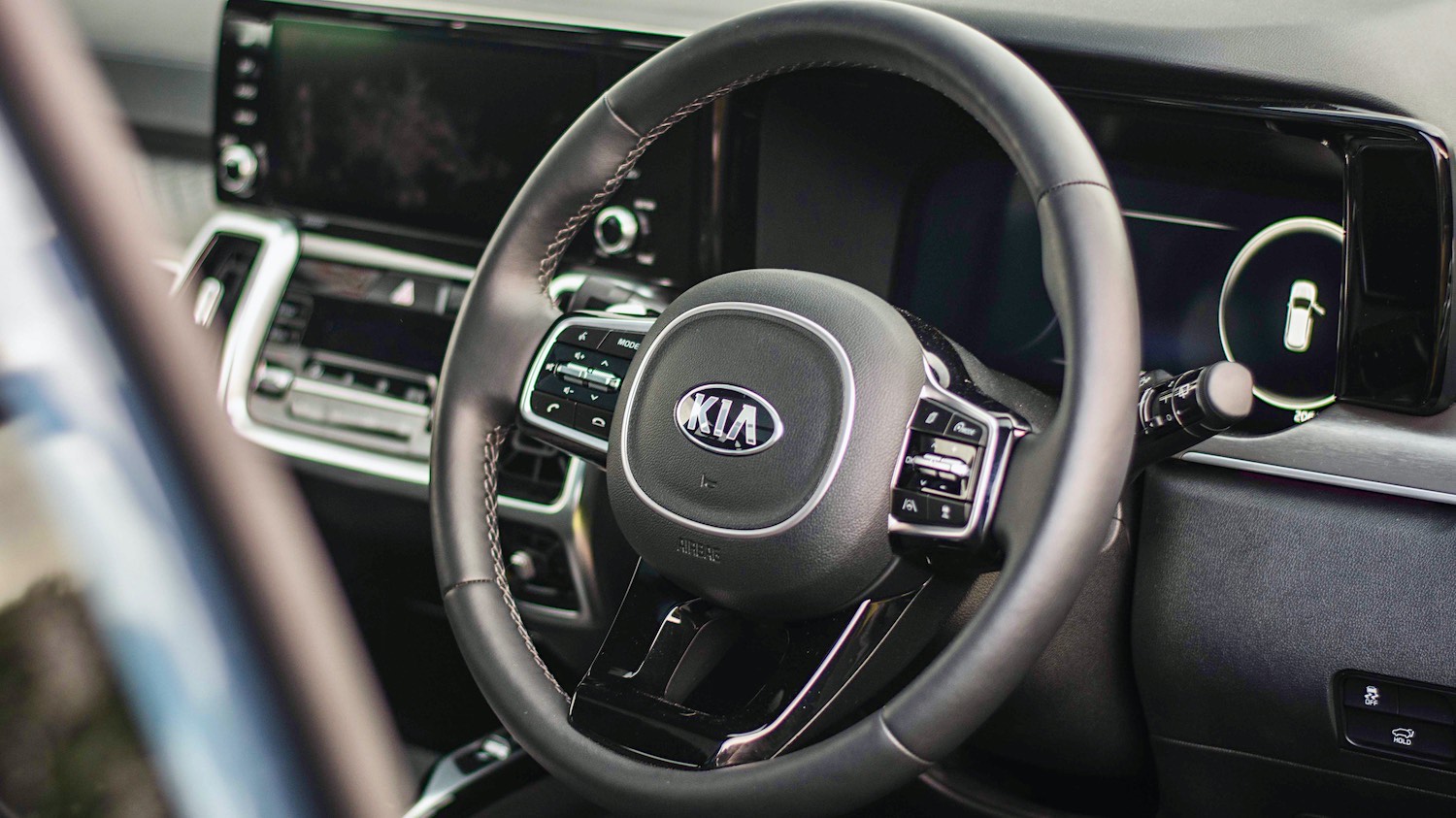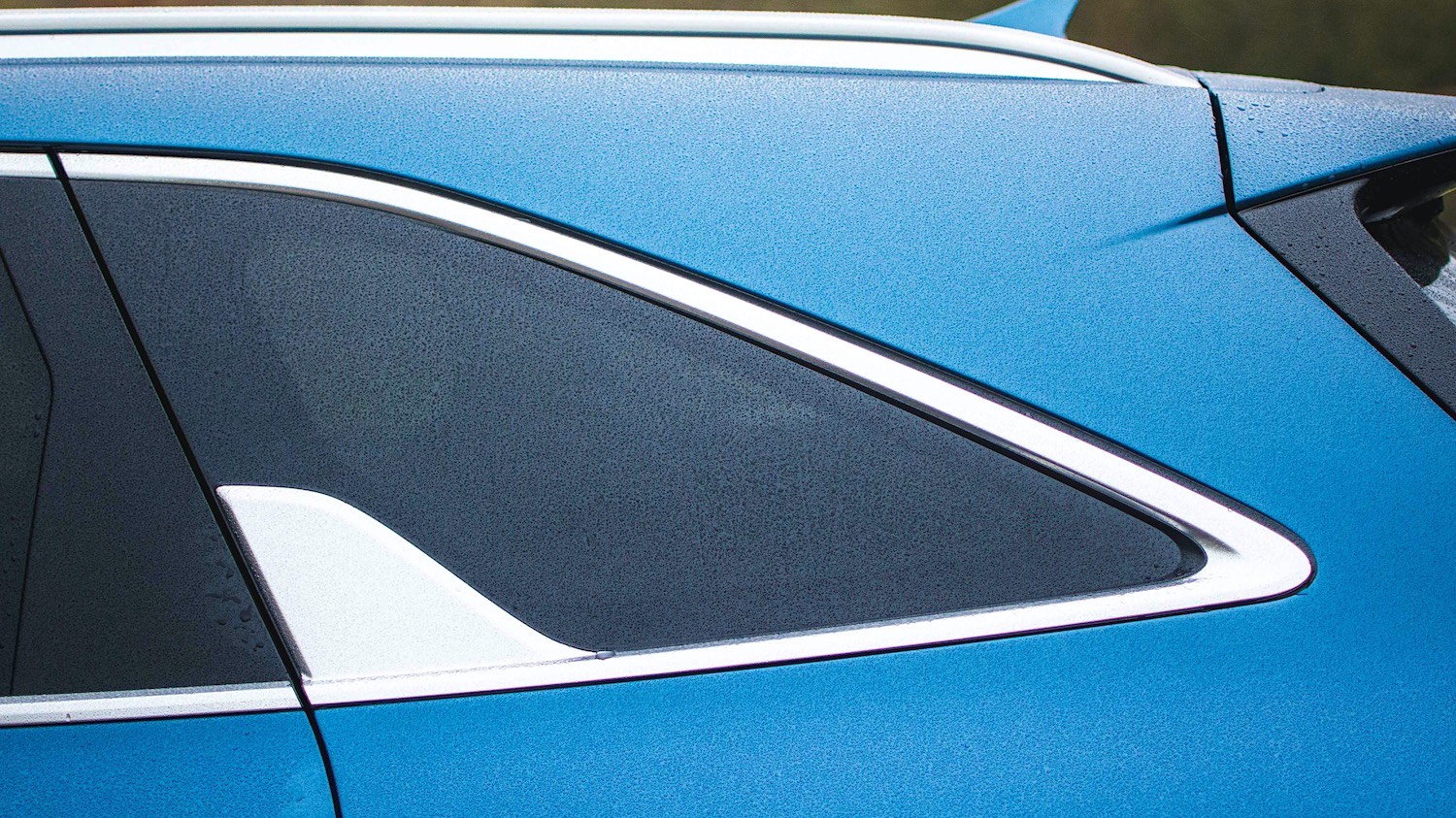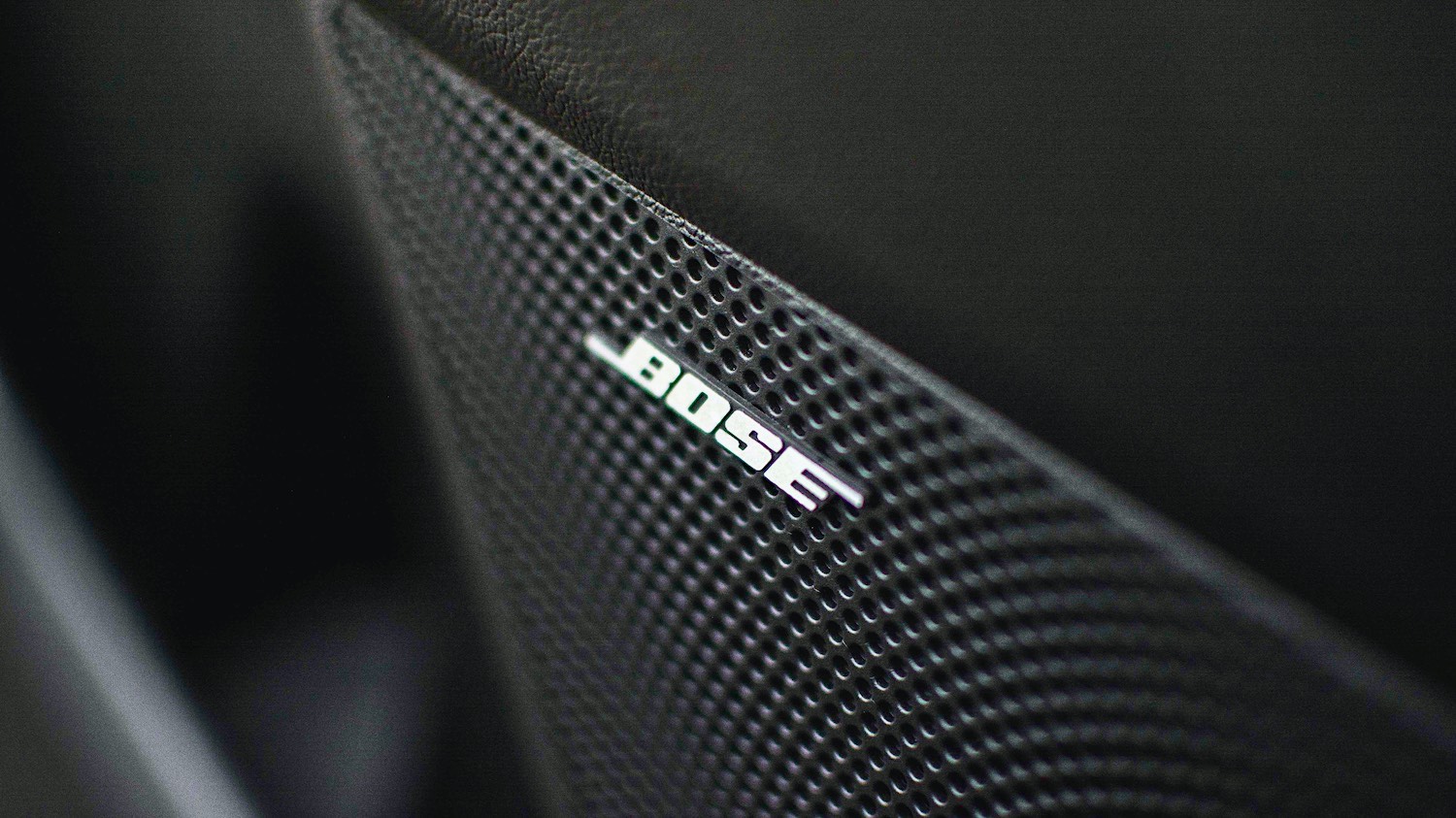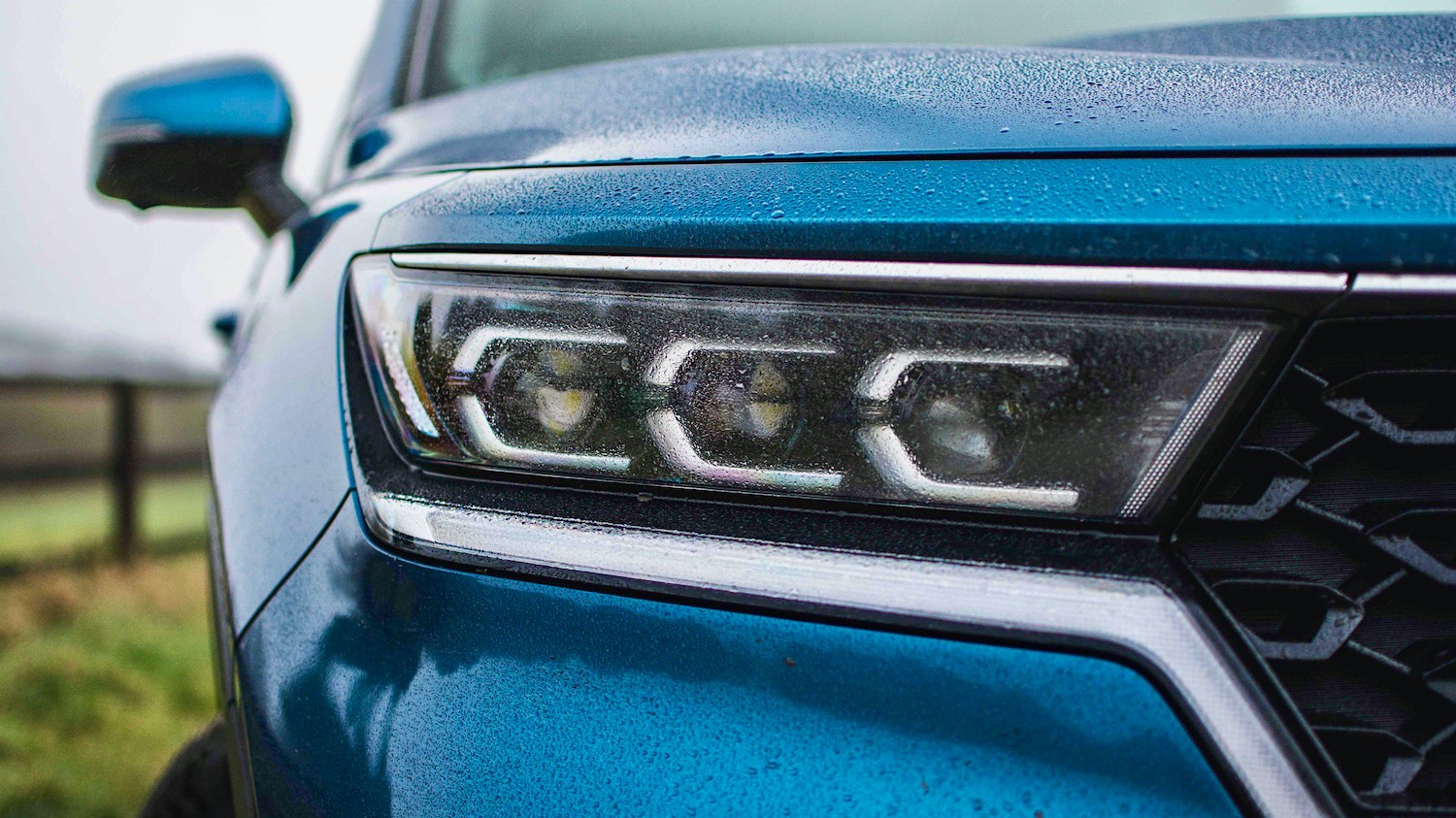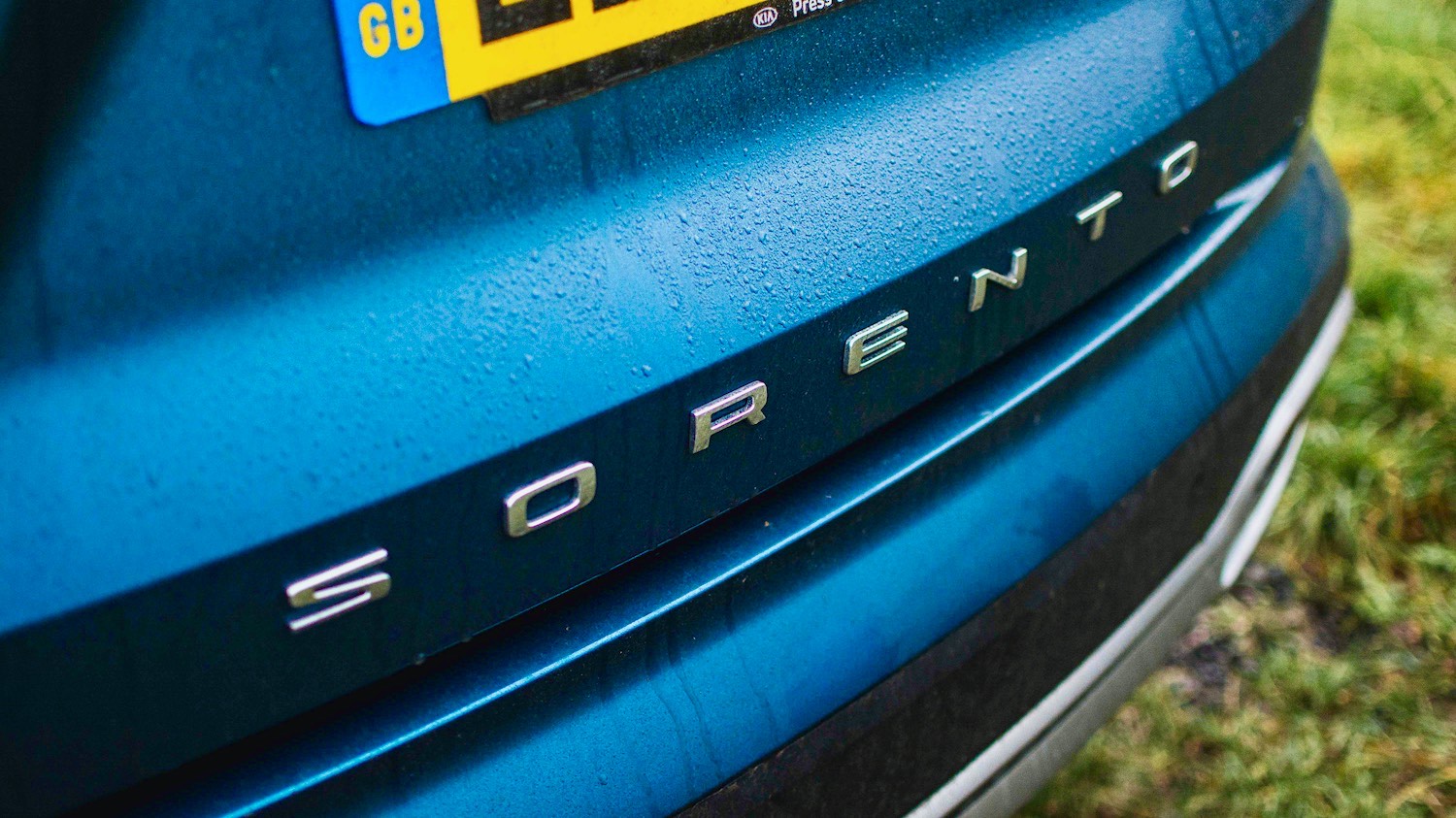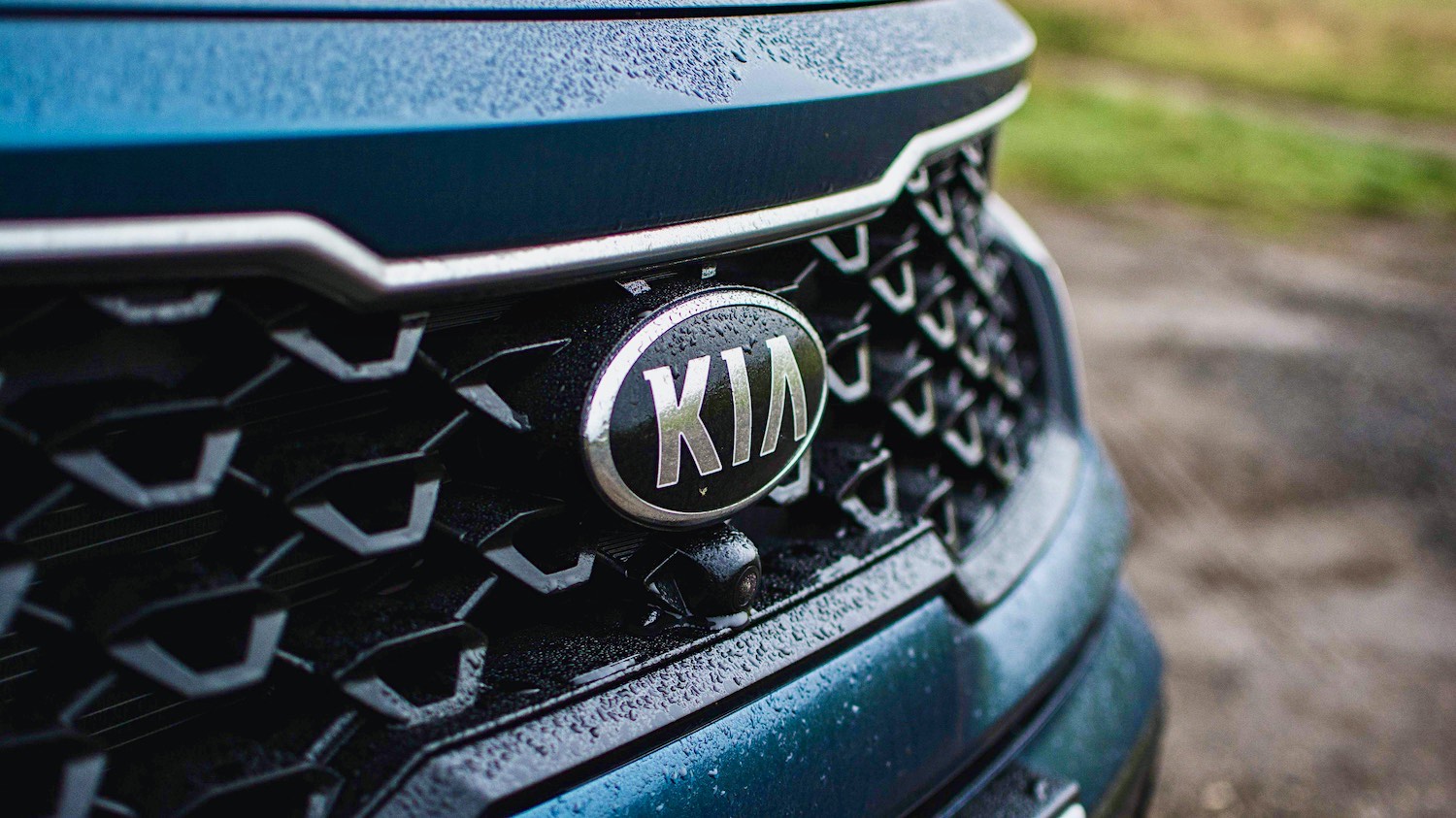The Sorento has sat proudly at the top of Kias’ SUV range for several years now, and it looks set to remain that way with the introduction of the all-new 7-seat Sorento during the latter half of 2020
The new Sorento is only available in a seven-seat configuration, split across three trim levels and two engine choices. Trims are designated base ‘2’ mid-range ‘3’ and range-topping’ 4′ while in terms of engines, you can currently choose from either the 1.6 petrol HEV engine on ‘2’ and ‘4’-litre trims, or the 2.2-litre CRDi Diesel engine, which is only available on the mid-range ‘3’ model. There is also a plug-in hybrid version in the works, which will follow these two initial offerings during the first part of 2021.
The design of the Sorento is thoroughly recognisable as a Kia. Still, in my opinion, it stands head-and-shoulders above the rest of their SUVs in terms of styling, resembling a big, beefed-up American SUV, which is a compliment as far as I’m concerned. In fact, I’d go as far as saying it’s the best-looking ‘full size’ SUV on sale today.
Of course, as Kia’s flagship SUV, it isn’t a cheap purchase, but, as you’d expect from Kia, the quality is far beyond its price tag, ranging from £38,845 to £46,945 depending on trim and options.
Even in mid-range ‘3’ trim level, the Sorento feels like a genuinely premium product, but in range-topping ‘4’ trim, it exceeded even my highest expectations. From the ultra-comfortable heated Nappa leather seats to the BOSE stereo, ambient lighting, HUD, and panoramic sunroof, there was every sense that the top-of-the-line Sorento was worth its £46,495 price tag as tested.
Of course, practicality and intelligent design abound in the Sorento, regardless of specification. A gargantuan boot is superbly flexible, ranging from 821 litres with the third row folded down, up to nearly 2000 litres of space with both sets of back seats folded down – who needs a van anyway? Admittedly, the third-row seats restrict the luggage capacity when in use, but you should still be able to fit a few overnight bags.
The interior design is without a doubt my favourite part of the new Sorento, with Kia having created a real ‘upmarket’ atmosphere within the car. In part, this is thanks to the materials used – plenty of leather, piano black accents and ‘soft touch’ materials in the ‘3’ and ‘4’ grades, along with a responsive 10.25″ touchscreen in the centre and virtual cockpit, the former only available from grade ‘3’ upwards.
But, beyond the aesthetics, the actual design itself is very innovative indeed. The storage bins, cubbies and compartments make the most of the Sorentos’ size, and these too are flexible. For example, the centre armrest has removable trays to modify the storage to your needs, while the door pockets are deep enough to seemingly lose the crown jewels in.
At night, the Sorento’s interior takes on a whole new atmosphere. The ambient lighting in the doors, dash and centre console can be colour coordinated with the virtual cockpit, or set to a custom colour of your choice via the infotainment system, creating a wonderfully opulent atmosphere, especially in conjunction with the heated Nappa leather seating in ‘4’ trim, but it is equally as impressive in the mid-range ‘3’ model.
In the second row, the rear seats have enough legroom to practically land a Boeing 747 between rows, along with plenty of storage, as well as being heated in the top-level trim and having their own set of USB charging plugs. They also fold and slide forward with ease to allow surprisingly dignified access to the third row – something many other seven-seat SUVs such as the Skoda Kodiaq struggle with.
Speaking of the third row, usually, these seats are restricted for use by only the smallest of passengers. However, that does not have to be the case here; While seats 6 & 7 are still nowhere near as comfortable as the second row, they are surprisingly easy to get into. The second row can be slid forward to allow the rearmost occupants a surprising amount of knee room, though headroom may pose an issue. In the back, there are additional USB sockets for charging on-the-go, while there is also individual controls for the A/C in the third row – a nice touch, especially on longer journeys.
So, a car as big as the Sorento scores well on practicality points and styling, but surely its on-road performance will fall flat? Well, the Sorento seems to be the exception to that rule.
Of course, the Sorento is not a small car, and no amount of intelligent engineering can mitigate its substantial size. However, once on the move, it’s easy to forget that you have two rows of seating behind you, as you make remarkably swift progress through the countryside.
The steering is surprisingly weighty, especially in ‘sport mode’, but this can be adjusted through the various modes available, accessed by a rotating toggle switch on the centre console. I certainly wouldn’t call the steering or handling ‘connected’, but there is an impressive lack of wallow in the corners, and the steering itself is more connected than you may expect.
With all variants being built upon the same chassis architecture, the wheelbase is the same for all models. Consequently, I found both the diesel and self-charging hybrid models handled in a very similar fashion. On the road, this seven-seat SUV handles very similarly to a standard SUV or even a larger crossover, hiding its size well until you come to some particularly narrow lanes or tight limited-visibility corners.
Should you need to tackle any rough terrain, the Sorento will have you covered. All-wheel-drive, hill descent control and numerous terrain settings will happily get you through all but the most challenging terrain. If towing is more your cup of tea, the diesel Sorento ticks that box thanks to its towing weight of up to 2,500kg. The hybrid version is also capable of towing but at a much lower maximum capacity of 1,650kg.
Tight manoeuvres are tricky given the size of the Sorento, but thankfully, when parking the all-around sensors made this a far less stressful process. The ‘4’ spec model, in particular, excels at low-speed parking moves, thanks to its all-round camera system and ‘augmented reality’ birds-eye view. In addition to this, the mirror-mounted cameras also give a live feed to the virtual cockpit when indicating, helping to alleviate any blind spots when switching lanes or turning across other lanes – very helpful indeed, and a feature I’d love to see Kia implement on future cars.
With two engine options currently available, which one is the best one to drive? Well, having tested both the petrol and diesel models, I have to say my preference lies with the diesel-engined variant, though I can’t deny I loved some of the luxurious touches found in the range-topping ‘4’ model I had on test.
That may seem a little odd given that the 1.6-litre petrol-hybrid not only gives a higher power output (226 vs 199bhp) but also offers a very similar fuel economy and a lower tax band. However, the diesel variant’s driving experience is far better and – in my mind – smoother. The new 8-speed wet-type DCT on the ‘3’ version is likely one of the reasons for this, with gear shifting being far more intuitive than on the 6-speed auto ‘box that comes coupled to the 1.6-litre hybrid engine and far quicker when using the manual paddles to go through the gears.
Not only that, but the low-down grunt of the Diesel engine feels more natural and progressive than the initial electric propulsion of the hybrid model. Admittedly it can be a little clattery when cold, but then again, what Diesel engine isn’t?
In typical diesel fashion, the low-down and mid-range punch of the CRDi engine was also far more ‘useable’ in every day driving than the initial surge of power from the hybrid engine, and it felt like a better fit for the Sorento’s bulk and ‘lifestyle’ appearance.
That’s not to say the self-charging hybrid isn’t impressive in its own right. From a purely engineering standpoint, it’s impressive; just a few years ago, a 1.6-litre engine in an SUV would’ve been significantly underpowered, but now – thanks to hybrid assistance – it’s more than enough to propel the new Sorento around with ease.
It had more than plenty of ‘grunt’ on the road, and it never once felt underpowered or underwhelming. Still, the electric motors’ initial surge of power when moving off from a standstill didn’t feel ‘right’ in the Sorento. The transmission speed and slickness lacked finesse, especially compared to that of the ‘3’ model with the CRDi engine.
The only other disappointment of the ‘4’ trim for me was the upgraded BOSE sound system. Despite the high-quality system and external subwoofer, I felt the music sounded relatively ‘flat’ despite tweaking several settings and faders, especially in comparison to the system found on the Sportage GT-Line S. However, if the stereo system is the biggest issue in a car, that says a lot about how fantastic the rest of the vehicle is.
In honesty, I’d been excited to drive the new Sorento since I saw launch images published back in summer last year. It’s safe to say that it delivered on all my expectations and then exceeded them comfortably.
So it comes down to this: Which version would I choose?
Well, it’s not quite that straightforward. If I could have the ‘4’ trim with the CRDi engine, that would be the easy option. Unfortunately, that’s simply not possible.
For me, although the luxuries in the ‘4’ trim were lovely – especially the additional light afforded by the panoramic sunroof – they weren’t quite enough to tip it in my favour, as the overall driving experience of the diesel-engined ‘3’ still wins outright in my opinion.
After all, cars are there to be driven, and on a long-distance holiday, work trip or even just motorway mile-munching, the mid-range ‘3’ spec with the diesel engine reigns supreme here.
Whichever model you choose, it’s safe to say that Kia has truly made themselves a flagship to be proud of. And, if this is any sort of indicator of the quality that future Kia models will enjoy, then Kia have a very promising future ahead of them indeed.

Kieran Bicknell
Motoring writer
Kieran Bicknell offers his fresh take on car reviews by making the most of his dynamic, yet detailed approach to writing. Having graduated from university with a BA (Hons) in Photography and spending a number of years as a freelance automotive photographer. Kieran is now putting his knowledge and writing skills to use, with the ability to supply both written articles and imagery. Kieran feels at home in anything from small superminis to the latest SUVs, and relishes the opportunity to drive, photograph and write about anything with four wheels.
What the others say on YouTube
A selection of the latest video reviews of this car….Just click to watch on this page.
